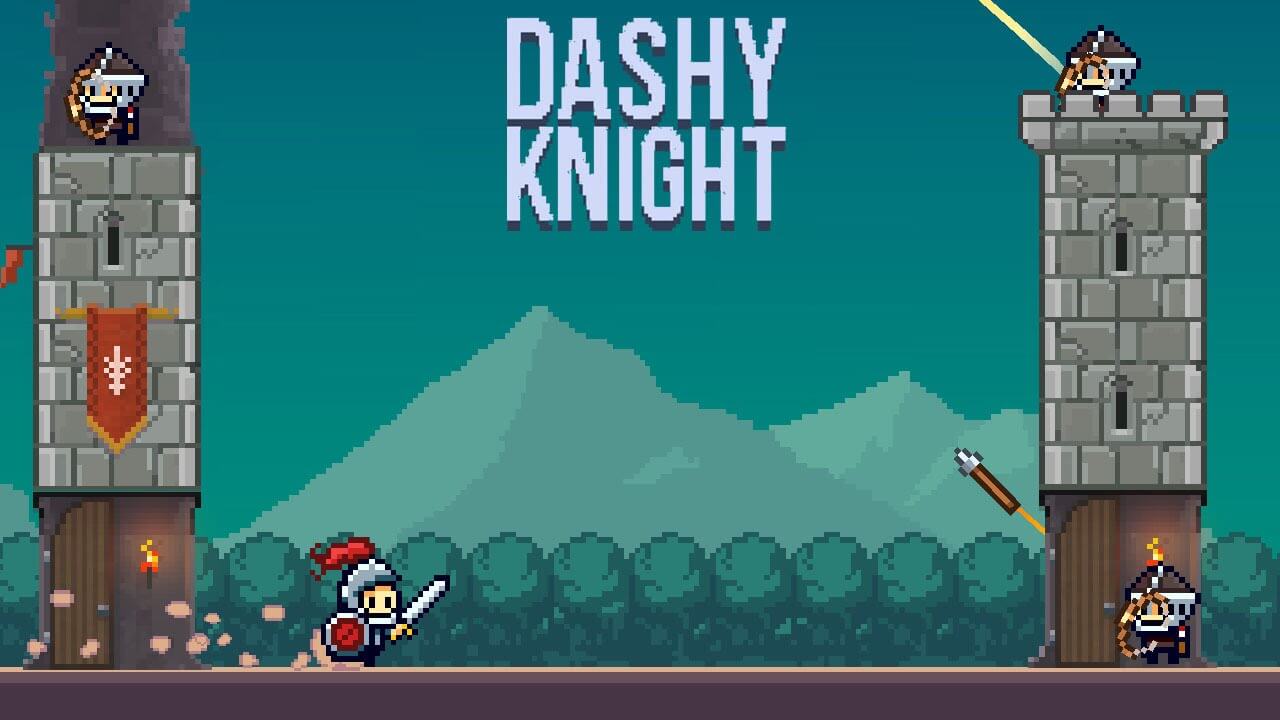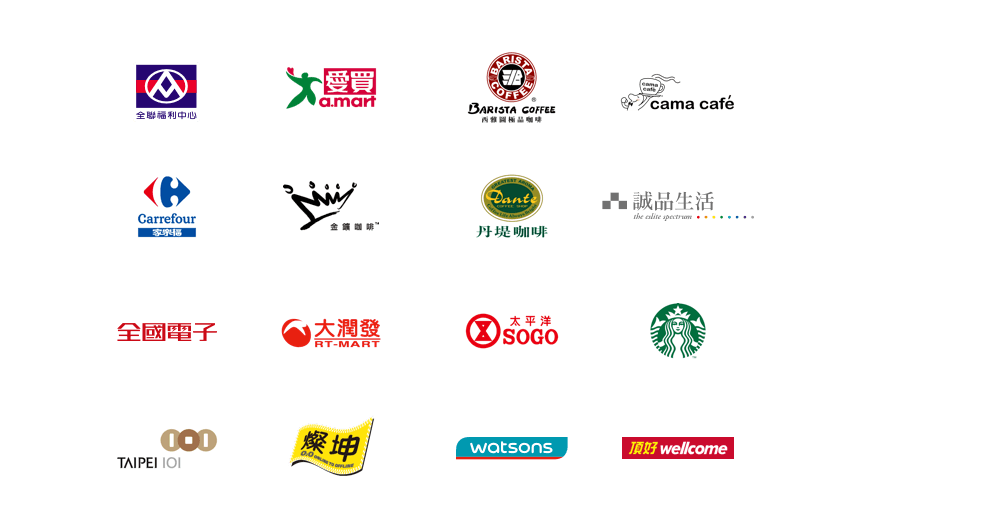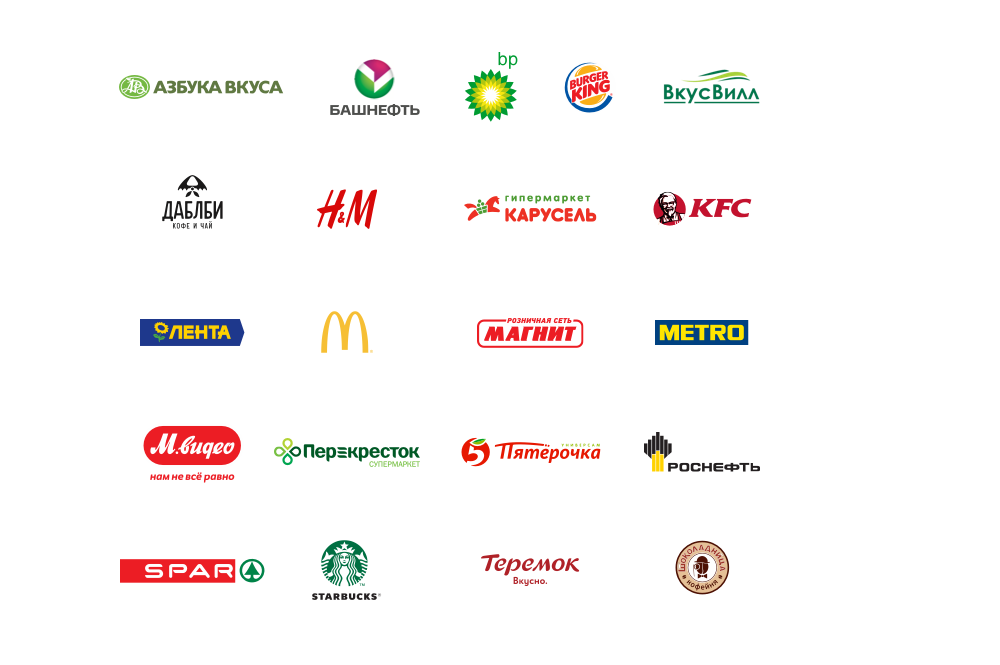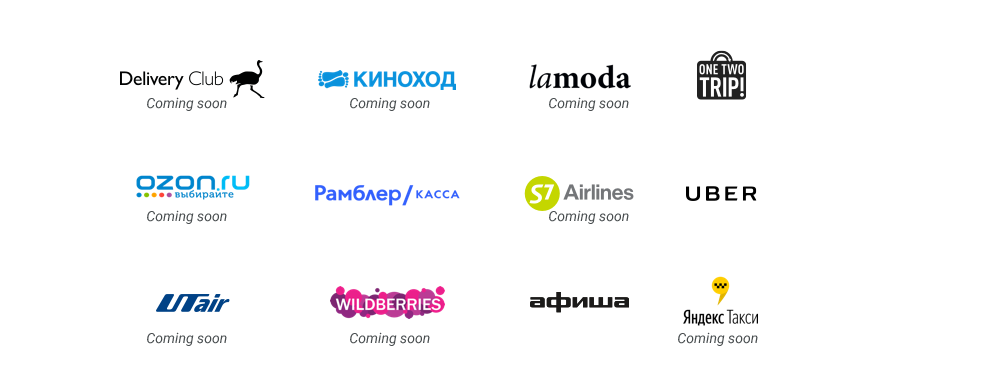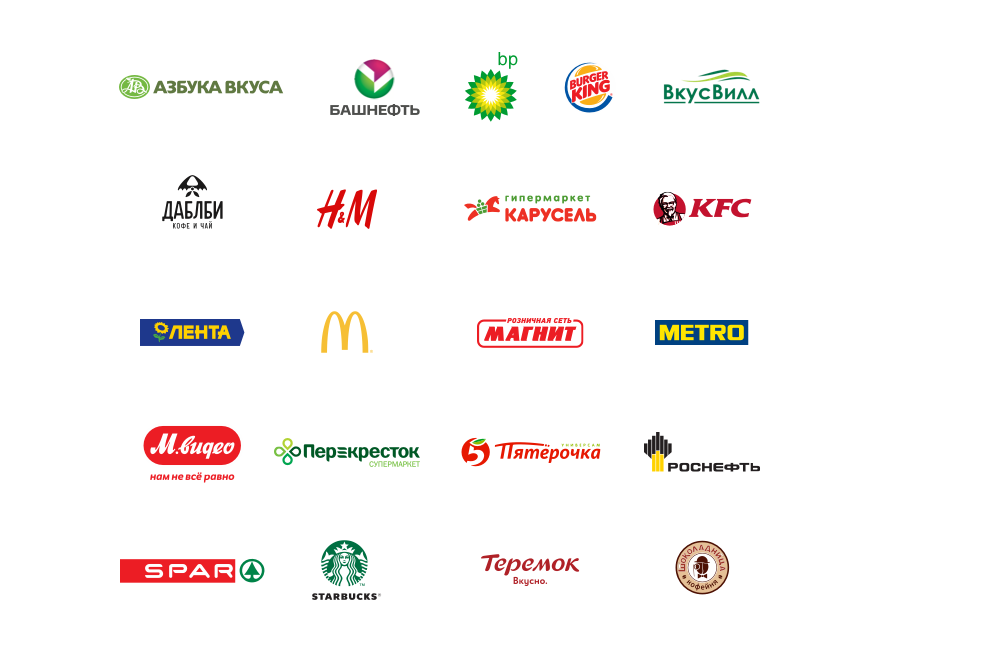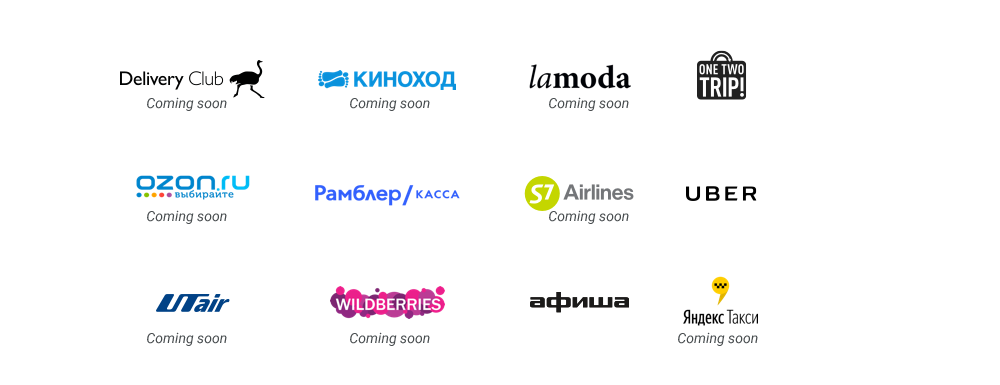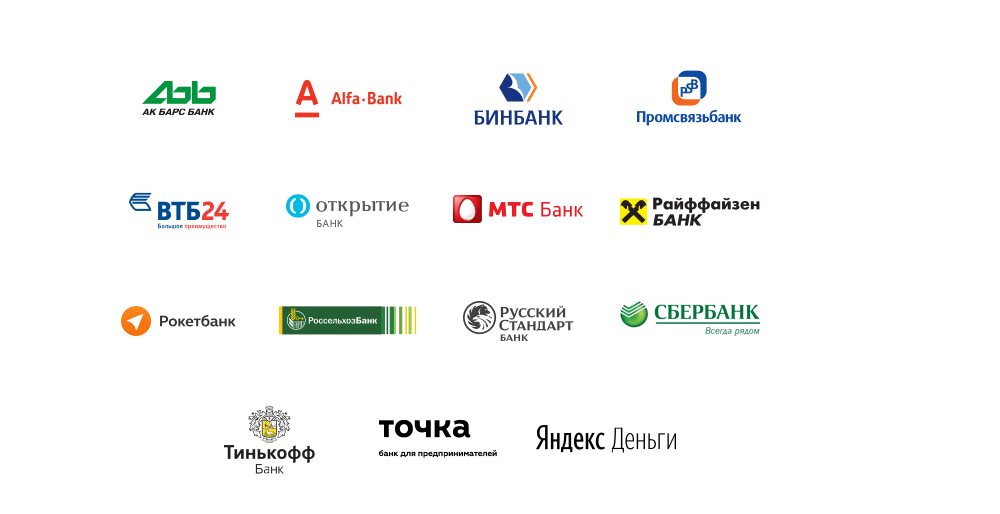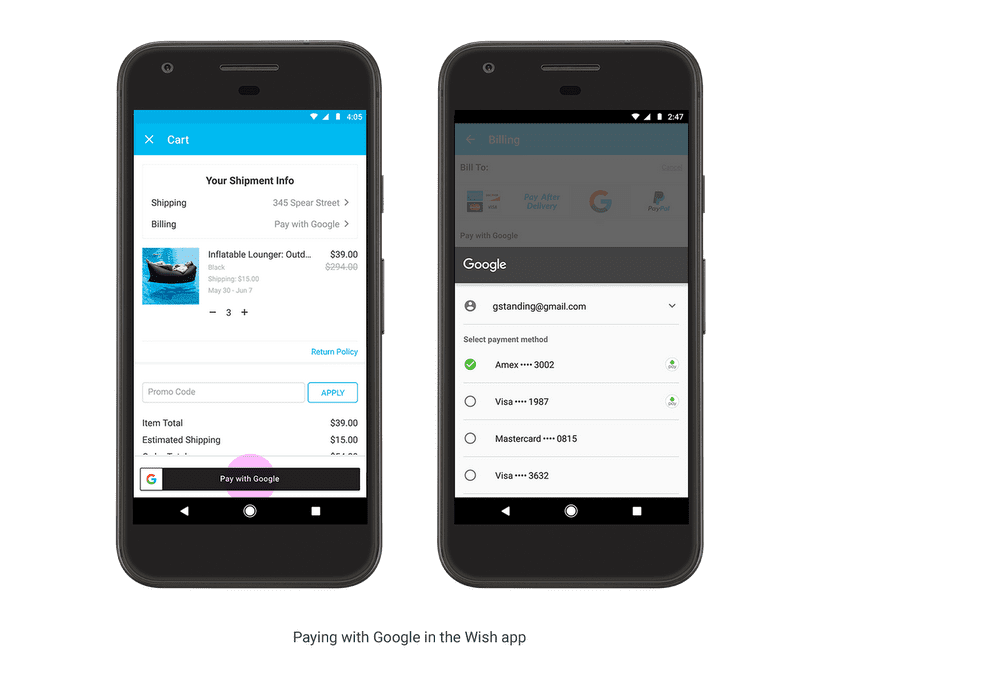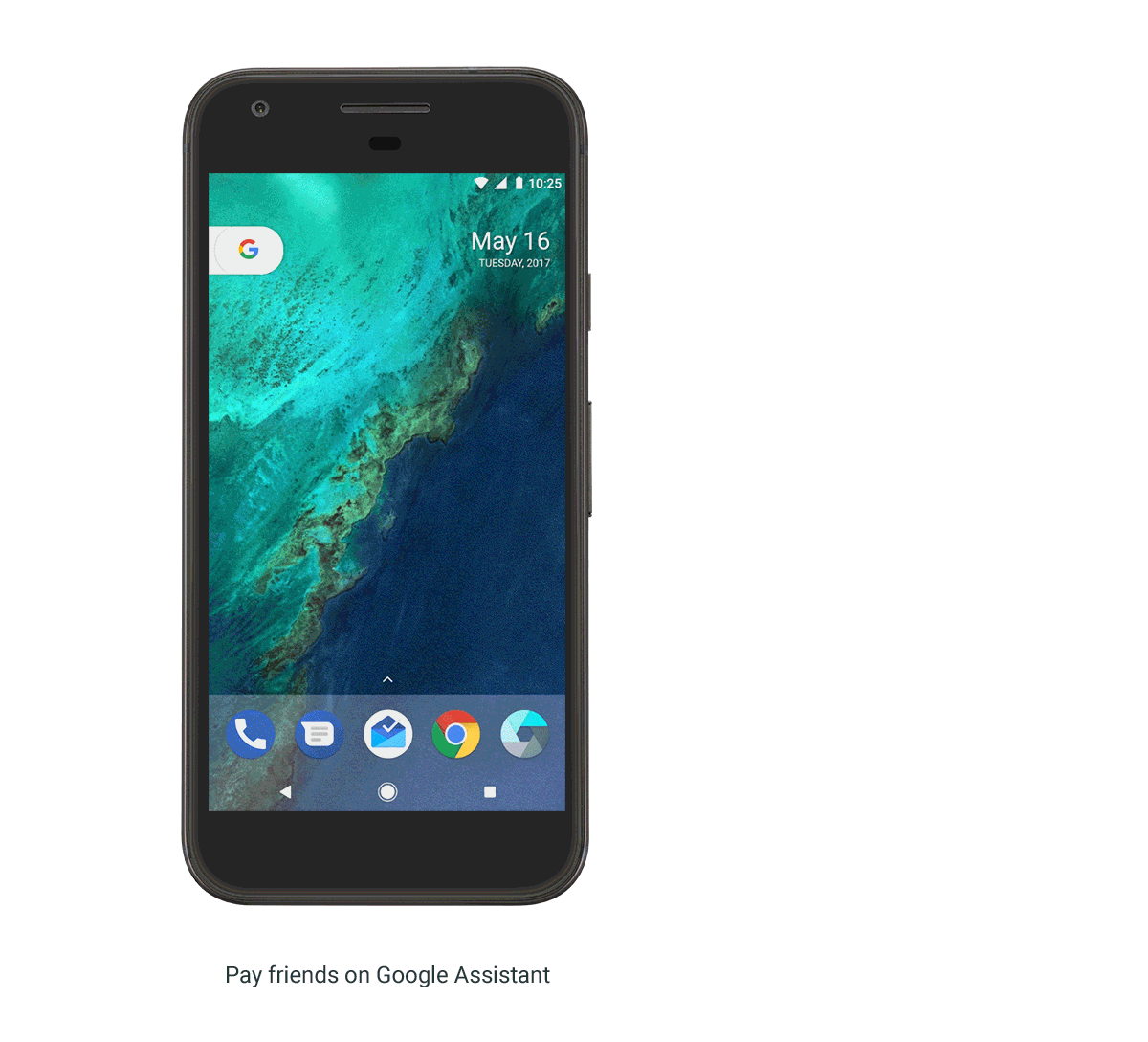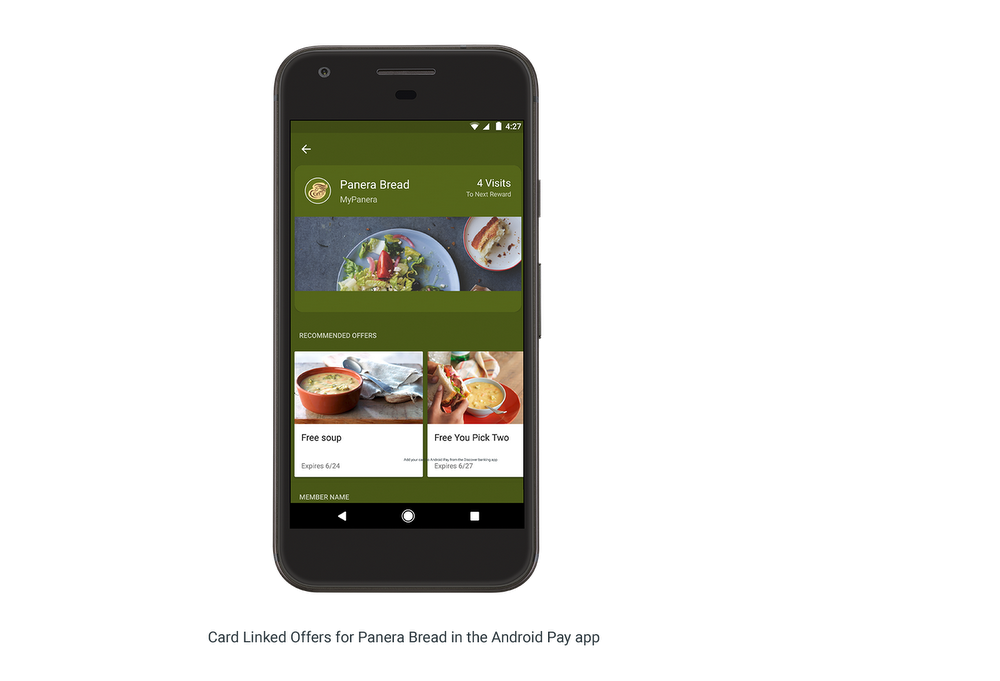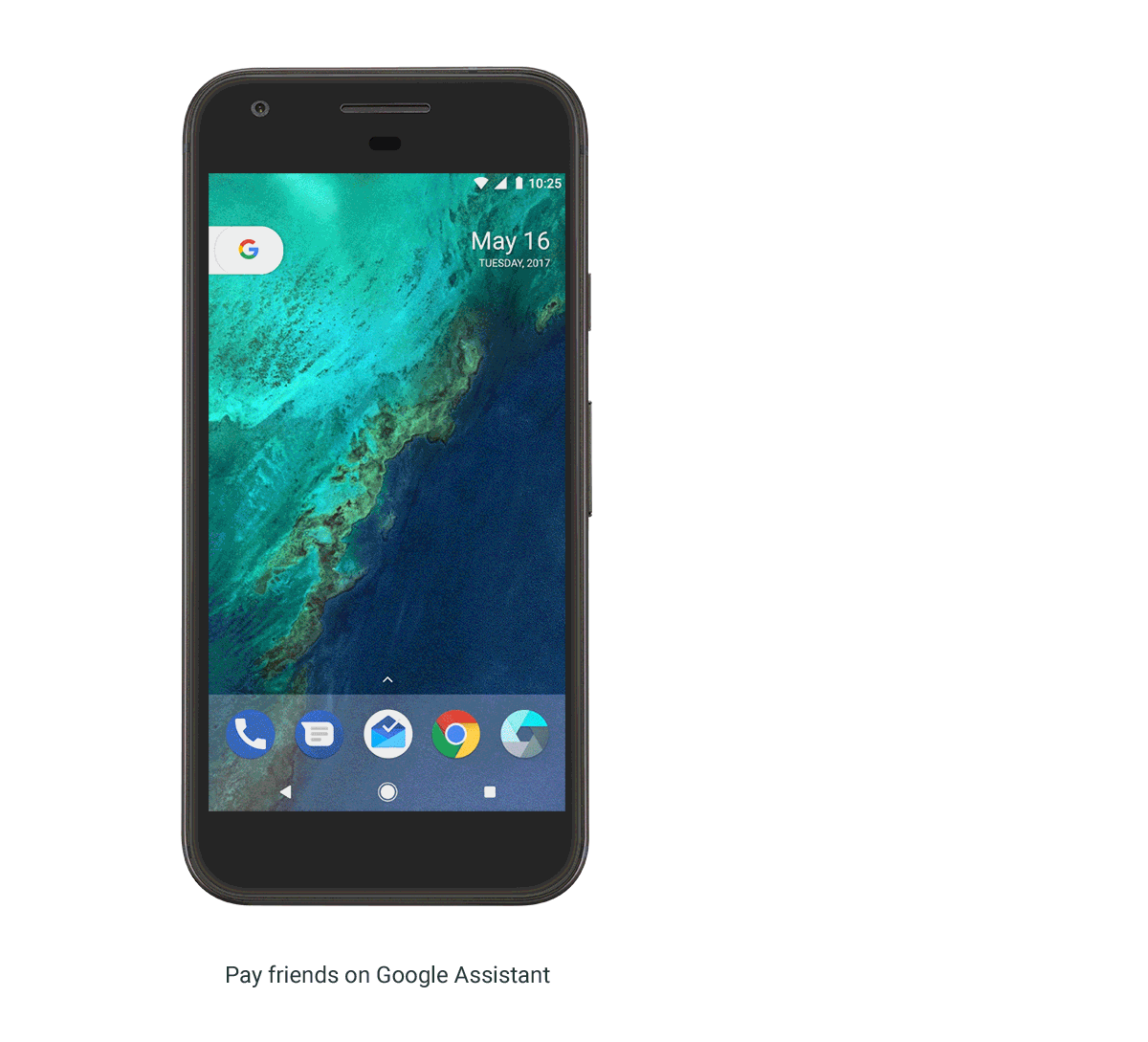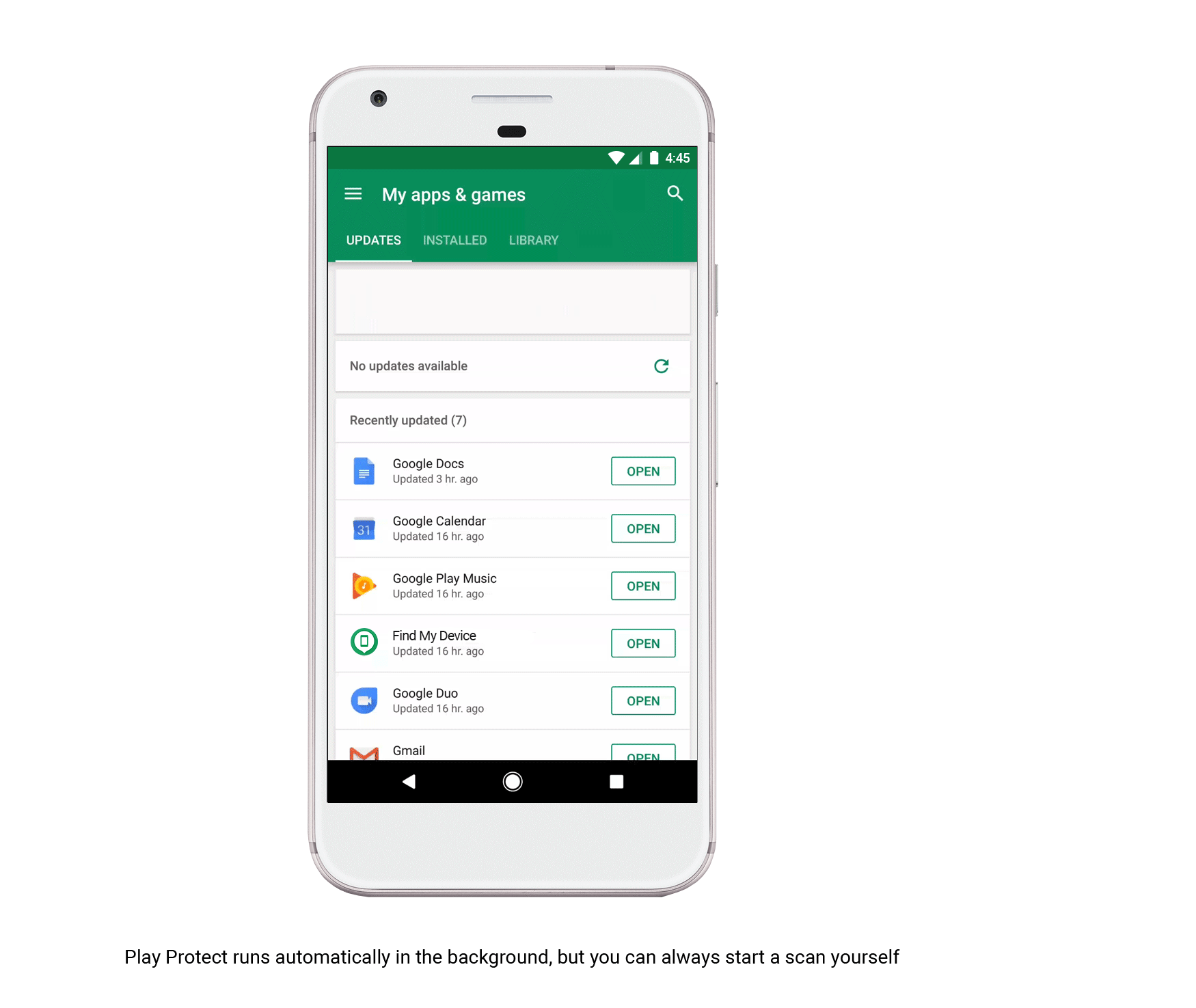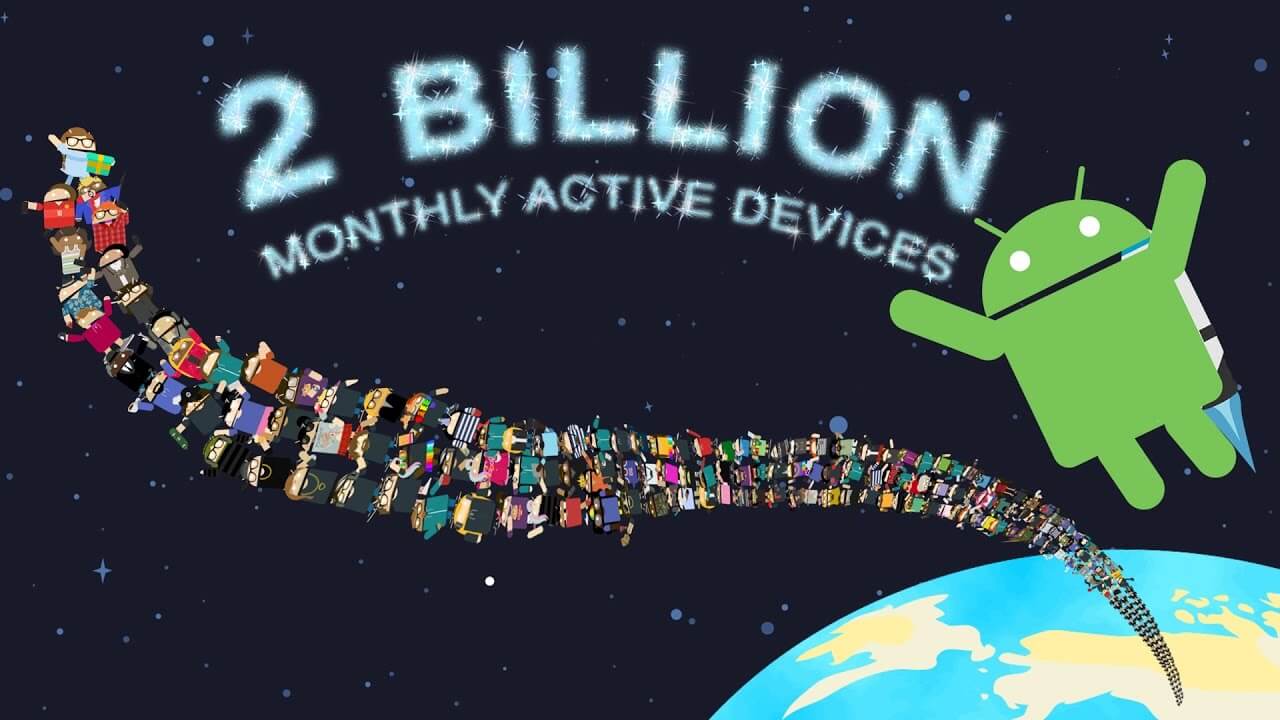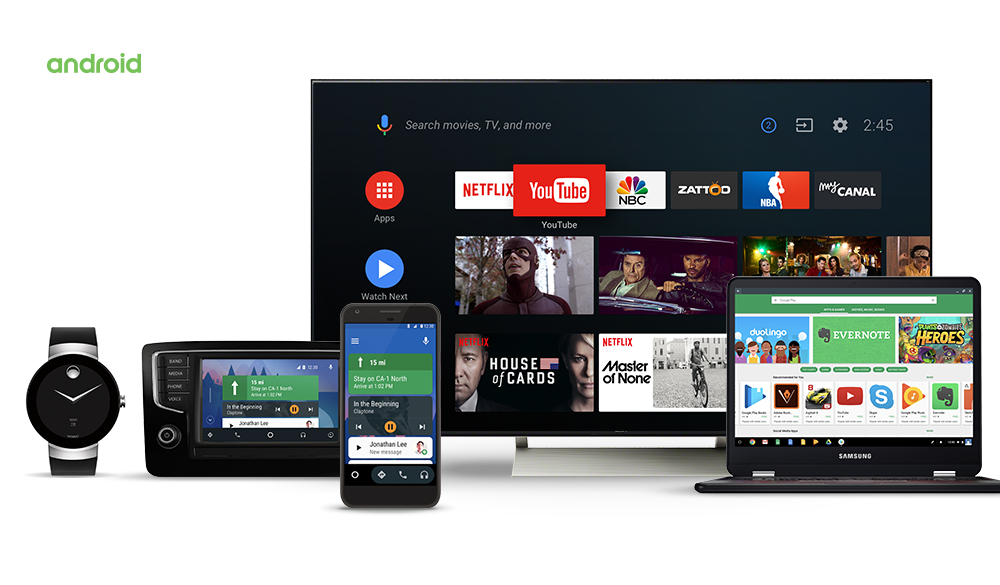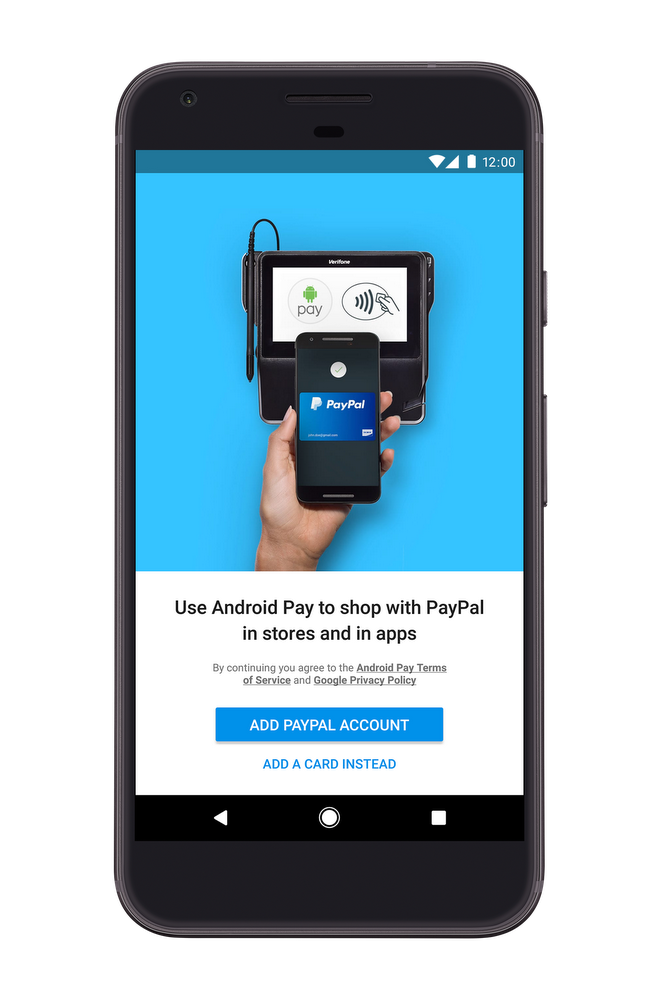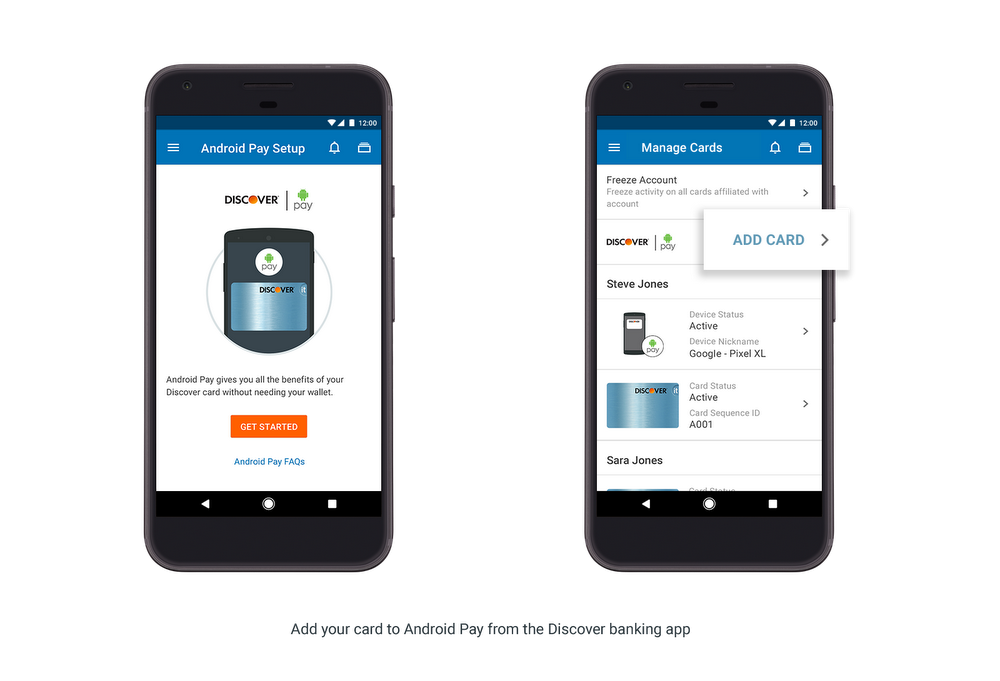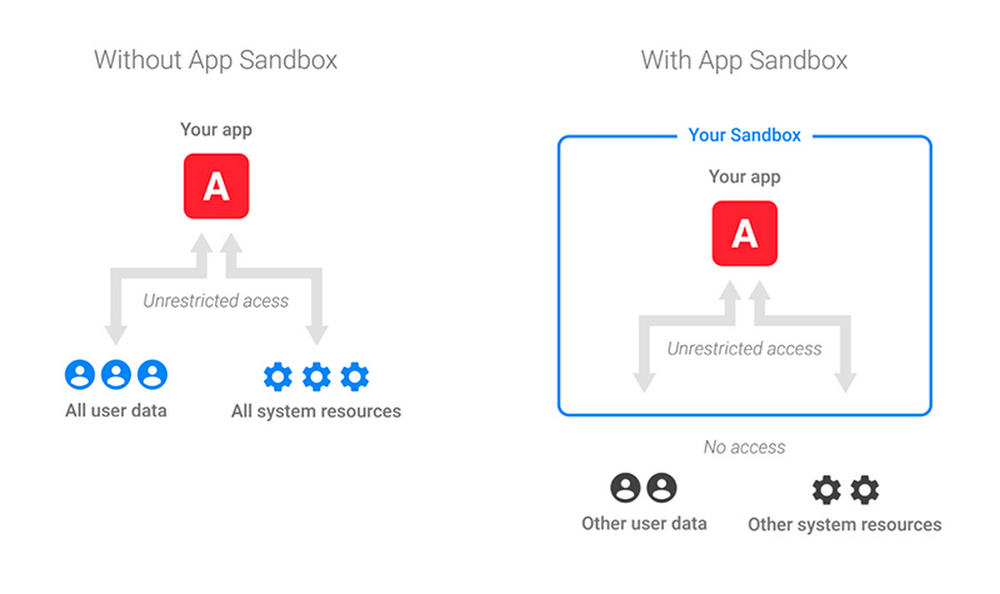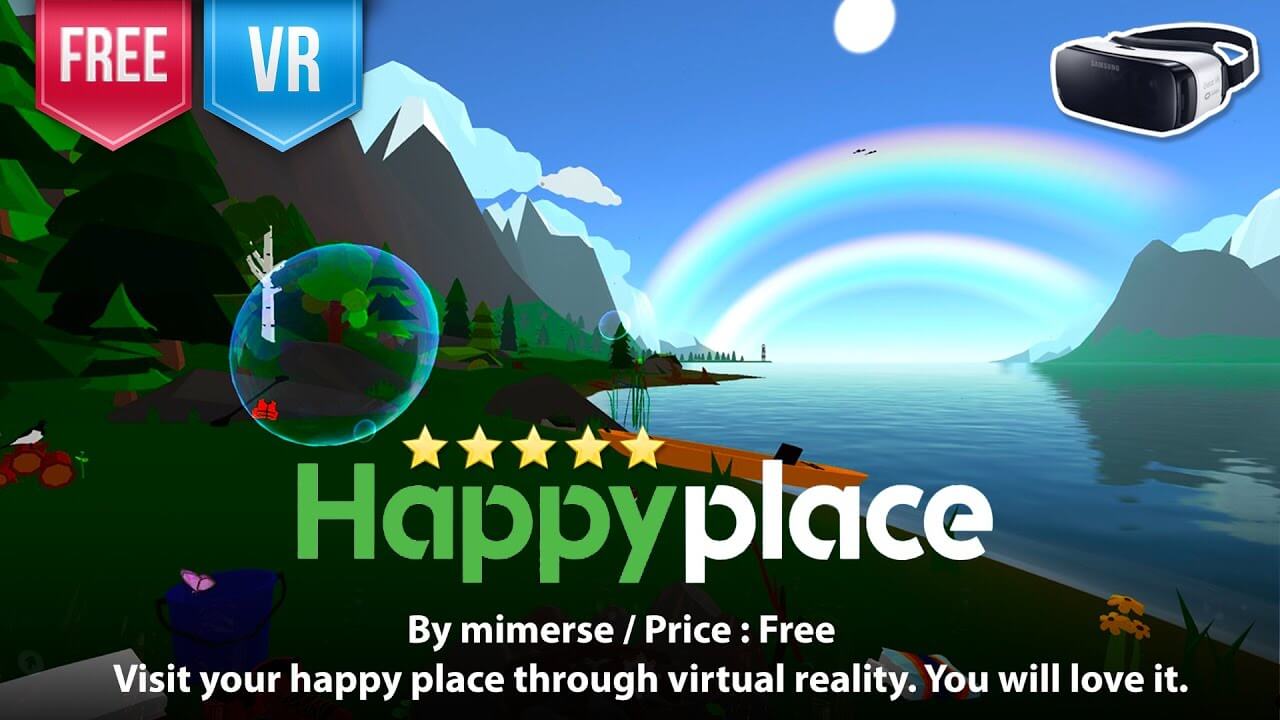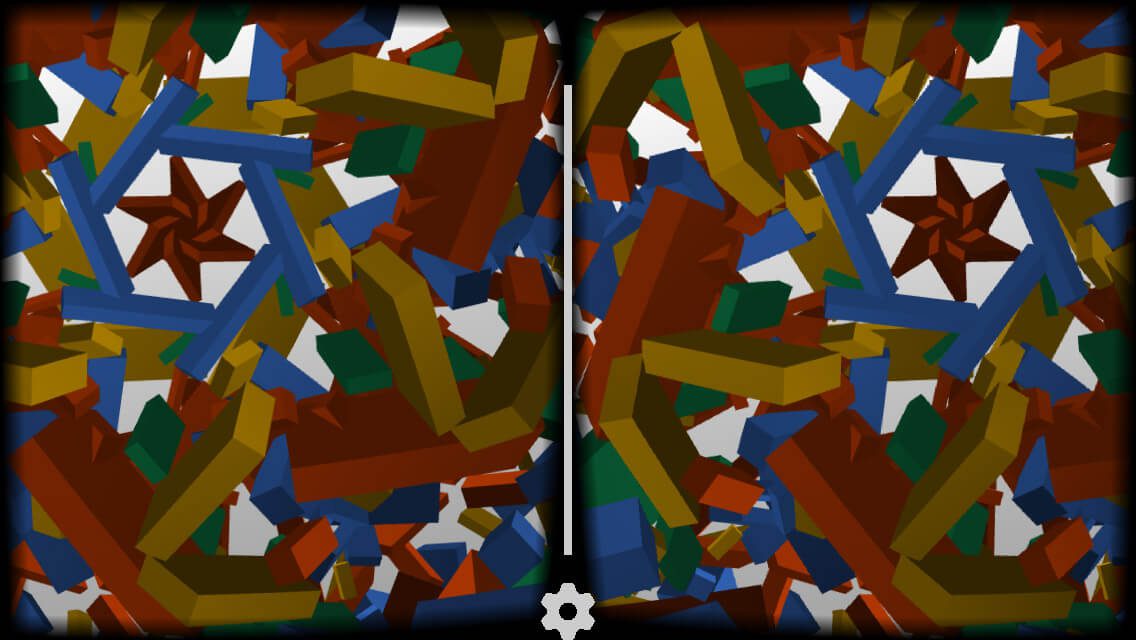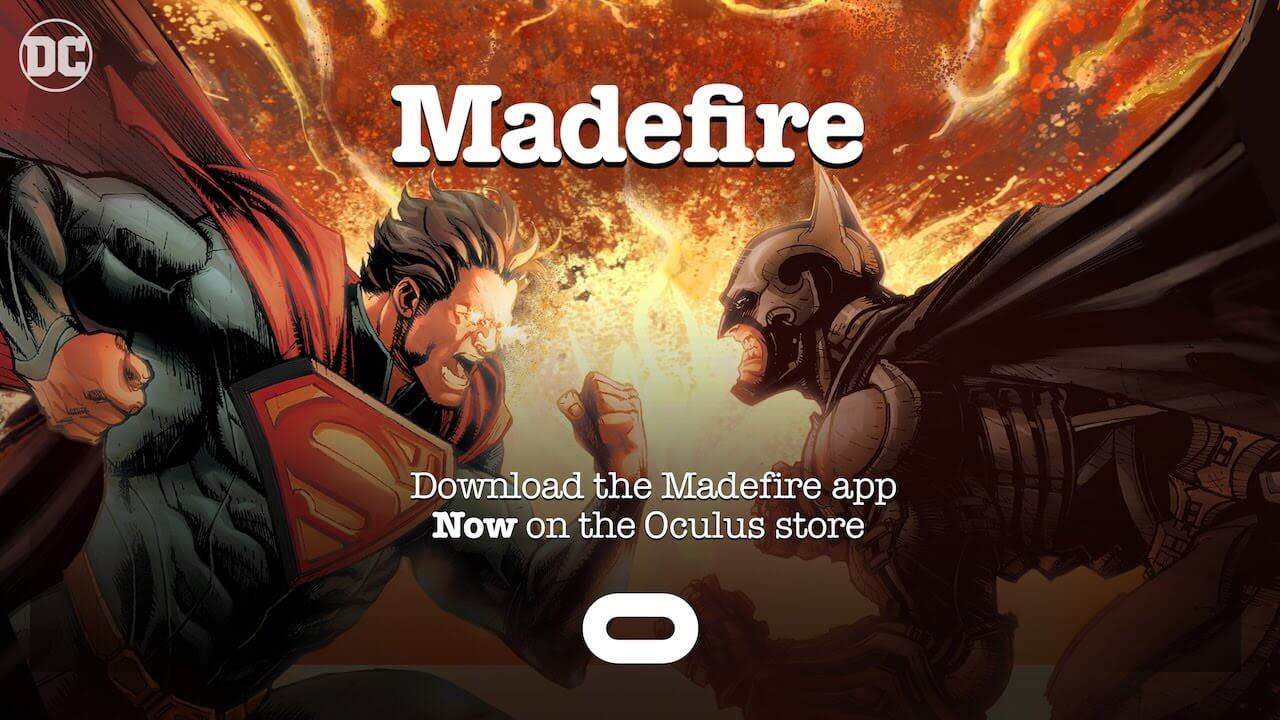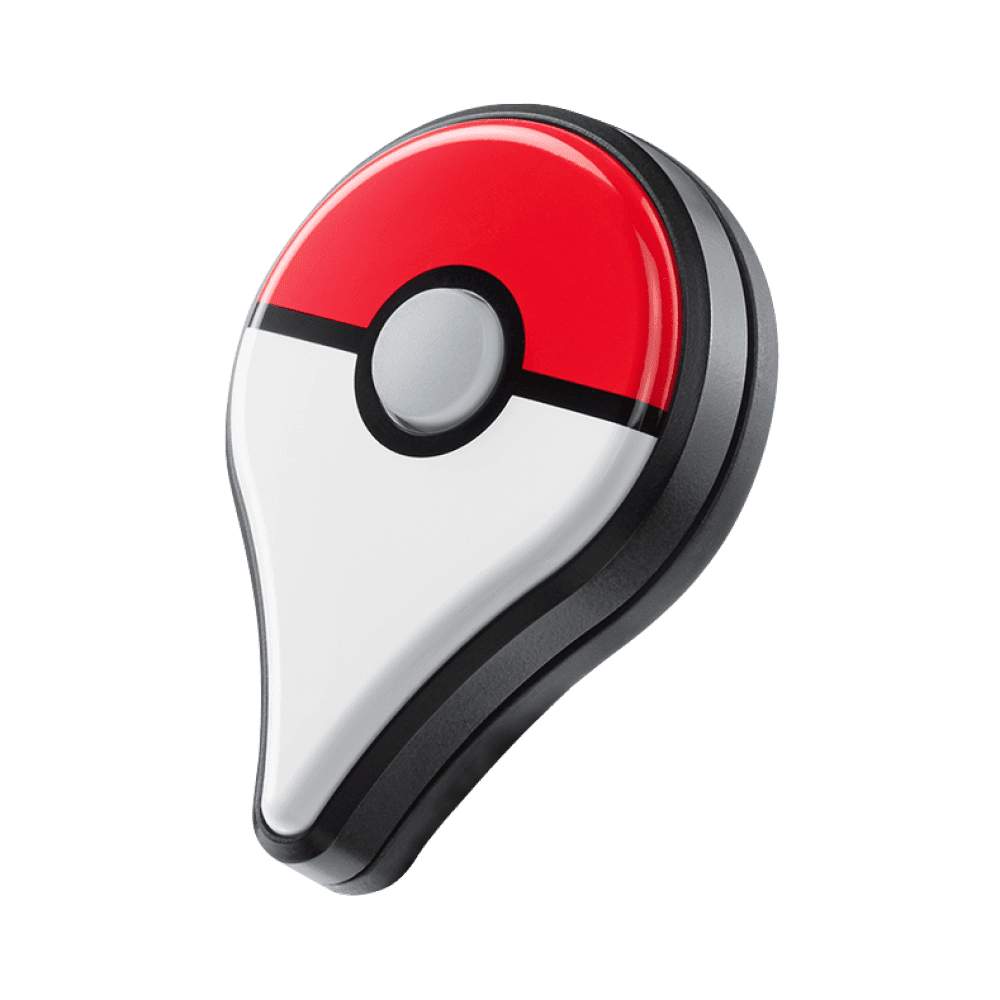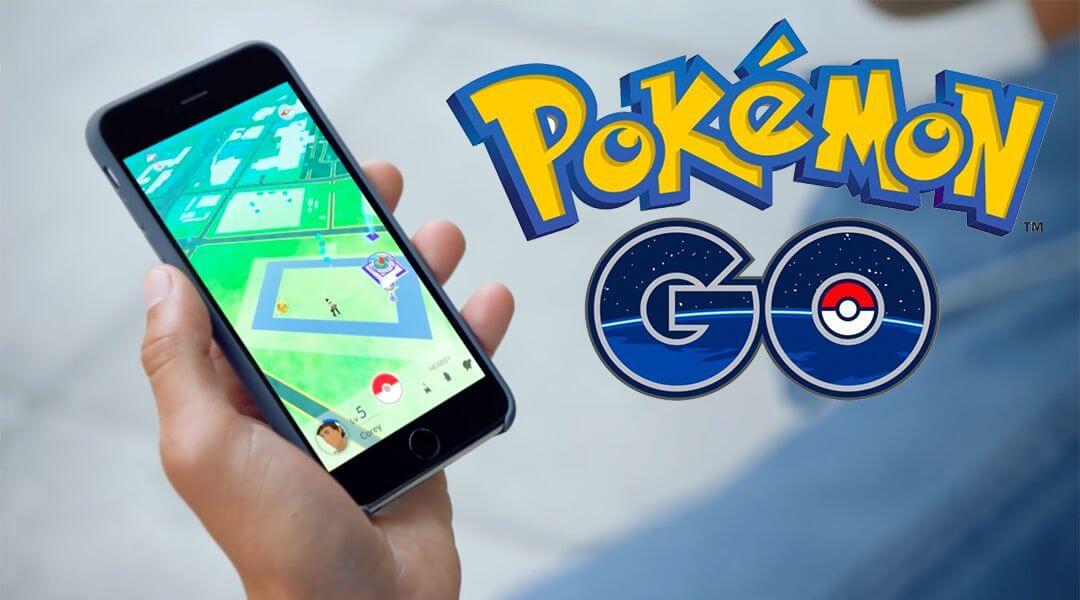Dashy Knights – Gameplay The Forest Android
Kategorie: Android
-

Crashy Cats Gameplay UnityGames Android
Reading Time: < 1 minuteCrashy Cats Gameplay UnityGames Android
… and it’s free! If you like the game, consider buying something to support us. If you don’t like the game, drop me an email at jackl@electric-turtle.com and we will work hard to make sure that we improve the game based on your feedback! Out US/UK/Canada/Australia today: https://play.google.com/store/apps/details?id=com.ElectricTurtle.CatCrash
-

Android Pay says “Nǐ Hǎo” to TaiwanAndroid Pay says “Nǐ Hǎo” to TaiwanPali Bhat, VP of Product Management, Payments
Reading Time: 2 minutesWhether you’re heading out for dinner or doing your weekly shopping, your Android phone is all you need to bring with you when you walk out the door. Starting now, Android Pay is available in Taiwan.
Android Pay helps you pay for things quickly and securely with your Android phone, plus lets you earn all the same loyalty points you would with your card.
You’ll be able to use Android Pay anywhere contactless payments are accepted, including your favorite shops like PX Mart, Carrefour, Watsons, and more. Simply unlock your phone and hold it to the payment terminal until you see a “check.” It’s that easy. And businesses across that already have contactless terminals don’t need to do anything else to start accepting Android Pay in their stores.

Surfing your favourite mobile sites and apps? Android Pay lets you speed through checkout at places like Watsons, CrazyMike, and more. You can also save your HappyGo cards to Android Pay, and rack up points while you shop.

To start using Android Pay, just download the Android Pay app on Google Play and add an eligible Visa or MasterCard credit card from one of our supported banks, including CTBC and First Bank. Don’t see your bank yet? Stay tuned. We’re working to partner with more banks and cards all the time.

Once you’ve added an eligible card, you’re ready to pay with your phone. Android Pay keeps a list of your latest transactions right in the app, so you can easily keep track of your purchases.
And when you use Android Pay in stores, your actual card number isn’t shared. Instead, Android Pay sends a virtual account number to represent your account info—so your actual card details stay safe. Plus, you’ll still get all the benefits and protections you’re used to with your bank.
If you’re a merchant or a developer, we’ve teamed up with many leading payment platforms, processors, and technology providers to make it even easier to accept Android Pay. Visit the Android Pay API developer site to learn more.
Get started with Android Pay in Taiwan today: Install the app, add your card and enjoy quick, convenient checkout.
Android Pay — the new digital wallet for Android smartphones — is available in Taiwan, helping you pay for things and earn loyalty points quickly and conveniently when you are on-the-go.
Website: LINK
-

Android Pay says “Nǐ Hǎo” to TaiwanAndroid Pay says “Nǐ Hǎo” to Taiwan
Reading Time: 2 minutesWhether you’re heading out for dinner or doing your weekly shopping, your Android phone is all you need to bring with you when you walk out the door. Starting now, Android Pay is available in Taiwan.
Android Pay helps you pay for things quickly and securely with your Android phone, plus lets you earn all the same loyalty points you would with your card.
You’ll be able to use Android Pay anywhere contactless payments are accepted, including your favorite shops like PX Mart, Carrefour, Watsons, and more. Simply unlock your phone and hold it to the payment terminal until you see a “check.” It’s that easy. And businesses across that already have contactless terminals don’t need to do anything else to start accepting Android Pay in their stores.

Surfing your favourite mobile sites and apps? Android Pay lets you speed through checkout at places like Watsons, CrazyMike, and more. You can also save your HappyGo cards to Android Pay, and rack up points while you shop.

To start using Android Pay, just download the Android Pay app on Google Play and add an eligible Visa or MasterCard credit card from one of our supported banks, including CTBC and First Bank. Don’t see your bank yet? Stay tuned. We’re working to partner with more banks and cards all the time.

Once you’ve added an eligible card, you’re ready to pay with your phone. Android Pay keeps a list of your latest transactions right in the app, so you can easily keep track of your purchases.
And when you use Android Pay in stores, your actual card number isn’t shared. Instead, Android Pay sends a virtual account number to represent your account info—so your actual card details stay safe. Plus, you’ll still get all the benefits and protections you’re used to with your bank.
If you’re a merchant or a developer, we’ve teamed up with many leading payment platforms, processors, and technology providers to make it even easier to accept Android Pay. Visit the Android Pay API developer site to learn more.
Get started with Android Pay in Taiwan today: Install the app, add your card and enjoy quick, convenient checkout.
Android Pay — the new digital wallet for Android smartphones — is available in Taiwan, helping you pay for things and earn loyalty points quickly and conveniently when you are on-the-go.
Website: LINK
-

Android Pay says „Привет“ to RussiaAndroid Pay says „Привет“ to RussiaPali Bhat, VP of Product Management, Payments
Reading Time: 4 minutesStepping out for groceries or an afternoon coffee? You’ll no longer need to bring anything more than your phone. Starting today, Android Pay is available in Russia – which means you’ll be able to enjoy a simpler and more secure way to pay across all 11 time zones.
Android Pay lets you check out quickly and easily in some of your favorite stores and apps – gone are the days of fumbling for credit cards and counting cash. Get the Android Pay app from Google Play and add your eligible card to get started. When you’re ready to pay, just hold your phone near the payment terminal and wait for the checkmark to appear. You can also add all your loyalty cards to Android Pay so they’re easily accessible.
Where can I use Android Pay?
Whether you’re fueling your car, grabbing coffee with breakfast, buying groceries, or going to the cinema, you can use Android Pay anywhere that accepts contactless payments –just look for either of these logos when you’re ready to pay.

Thousands of your favorite places already accept Android Pay, including Magnit, Perekrestok, Starbucks, KFC and Rosneft. And with your loyalty cards saved in the Android Pay app, there’s no need to carry them around anymore.

Shopping in apps like Lamoda, OneTwoTrip, or Rambler-Kassa? Breeze through checkout with Android Pay. You’ll no longer have to enter your payment details every time –look for the Android Pay button and you can pay with a single tap. Here some of the apps that accept Android Pay now, with more coming soon!

And if you’re an online merchant, we’ve teamed up with several processors to make it even easier for you to accept Android Pay in your apps and sites. Visit the Android Pay API developer site to learn more.

Getting started
To start using Android Pay, download the Android Pay app from Google Play. You’ll need to have Android KitKat 4.4 or higher on your phone. Then, add an eligible Visa or Mastercard credit or debit card from a supported bank, such as AK BARS, Alfa-Bank, B&N Bank, MTS Bank, Otkritie, Promsvyazbank, Raiffeisen Bank, Rocketbank, Russian Standard Bank, Russian Agricultural Bank, Sberbank, Tinkoff Bank, Tochka, VTB24 or Yandex.Money. Don’t see your bank on the list? Don’t worry. We’re always adding new partners, and we’ll let you know as soon as new banks come on board.

If you already have the Raiffeisen Bank, Sberbank, or Tinkoff Bank mobile apps, you can enable Android Pay from those banking apps without having to download Android Pay. Just tap the “Add to Android Pay” button to enable your card in Android Pay without entering your card information.
Because Android Pay doesn’t share your actual credit or debit card number with stores, it’s safer than using a plastic card. If your phone is ever lost or stolen, you can use Find My Device to instantly lock your phone from anywhere, secure it with a new password, or wipe it clean of your personal information.
Ready to use Android Pay in stores? You’ll need to make sure your phone supports NFC. Thousands of phones do – and we’ve created a guide to answer your questions and point you in the right direction.

We’re thrilled to name Russia as our 11th country to adopt Android Pay, and we hope it’ll make your everyday purchases faster, easier, and a little more fun. Get the app now to enjoy the benefits of effortless checkout in apps, online, and at all your favorite places.
Android Pay is now available in Russia – which means you’ll be able to enjoy a simpler and more secure way to pay across all 11 time zones.
Website: LINK
-

Android Pay says „Привет“ to RussiaAndroid Pay says „Привет“ to Russia
Reading Time: 4 minutesStepping out for groceries or an afternoon coffee? You’ll no longer need to bring anything more than your phone. Starting today, Android Pay is available in Russia – which means you’ll be able to enjoy a simpler and more secure way to pay across all 11 time zones.
Android Pay lets you check out quickly and easily in some of your favorite stores and apps – gone are the days of fumbling for credit cards and counting cash. Get the Android Pay app from Google Play and add your eligible card to get started. When you’re ready to pay, just hold your phone near the payment terminal and wait for the checkmark to appear. You can also add all your loyalty cards to Android Pay so they’re easily accessible.
Where can I use Android Pay?
Whether you’re fueling your car, grabbing coffee with breakfast, buying groceries, or going to the cinema, you can use Android Pay anywhere that accepts contactless payments –just look for either of these logos when you’re ready to pay.

Thousands of your favorite places already accept Android Pay, including Magnit, Perekrestok, Starbucks, KFC and Rosneft. And with your loyalty cards saved in the Android Pay app, there’s no need to carry them around anymore.

Shopping in apps like Lamoda, OneTwoTrip, or Rambler-Kassa? Breeze through checkout with Android Pay. You’ll no longer have to enter your payment details every time –look for the Android Pay button and you can pay with a single tap. Here some of the apps that accept Android Pay now, with more coming soon!

And if you’re an online merchant, we’ve teamed up with several processors to make it even easier for you to accept Android Pay in your apps and sites. Visit the Android Pay API developer site to learn more.

Getting started
To start using Android Pay, download the Android Pay app from Google Play. You’ll need to have Android KitKat 4.4 or higher on your phone. Then, add an eligible Visa or Mastercard credit or debit card from a supported bank, such as AK BARS, Alfa-Bank, B&N Bank, MTS Bank, Otkritie, Promsvyazbank, Raiffeisen Bank, Rocketbank, Russian Standard Bank, Russian Agricultural Bank, Sberbank, Tinkoff Bank, Tochka, VTB24 or Yandex.Money. Don’t see your bank on the list? Don’t worry. We’re always adding new partners, and we’ll let you know as soon as new banks come on board.

If you already have the Raiffeisen Bank, Sberbank, or Tinkoff Bank mobile apps, you can enable Android Pay from those banking apps without having to download Android Pay. Just tap the “Add to Android Pay” button to enable your card in Android Pay without entering your card information.
Because Android Pay doesn’t share your actual credit or debit card number with stores, it’s safer than using a plastic card. If your phone is ever lost or stolen, you can use Find My Device to instantly lock your phone from anywhere, secure it with a new password, or wipe it clean of your personal information.
Ready to use Android Pay in stores? You’ll need to make sure your phone supports NFC. Thousands of phones do – and we’ve created a guide to answer your questions and point you in the right direction.

We’re thrilled to name Russia as our 11th country to adopt Android Pay, and we hope it’ll make your everyday purchases faster, easier, and a little more fun. Get the app now to enjoy the benefits of effortless checkout in apps, online, and at all your favorite places.
Android Pay is now available in Russia – which means you’ll be able to enjoy a simpler and more secure way to pay across all 11 time zones.
Website: LINK
-

What’s next for Google payment and loyalty experiencesWhat’s next for Google payment and loyalty experiences
Reading Time: 3 minutesThousands of apps and millions of stores accept Android Pay, a simpler and more secure mobile payment experience. Android Pay is now available in 10 markets, with more coming soon, including Brazil, Canada, Russia, Spain and Taiwan. And in addition to our already announced Visa and Mastercard partnerships, we’ll soon enable a streamlined mobile checkout experience for PayPal users.
The newest ways to pay with Google
Yesterday, we announced the Google Payment API, which lets people pay in app or online with any verified credit or debit card saved to their Google Account, via products like Google Play, Chrome and YouTube.

For users, the option to pay with Google means breezing through checkout without needing to remember and type multiple lines of payment details. You simply choose your preferred card, enter a security code or authenticate with your Android device, and check out.
Developers who adopt this API can enable an easy-to-use checkout experience for their customers. Sign up for early access to the new Google Payment API.
In the upcoming months, we’ll also enable people in the U.S. to send or receive payments via the Google Assistant. On your Google Home or Android device, it’s as simple as saying “Ok Google, send $10 to Jane for pizza.” All you need is a debit card linked to your Google account.

Connect with customers before, during and after purchase
We’re also announcing new ways for merchants to engage and reward customers before they walk into the store and after they’ve left.
The Card Linked Offers API drives customer loyalty by providing a new channel to deliver targeted offers, and Panera Bread is one of the first merchants who will roll out this new capability nationally. MyPanera members who save their loyalty card to Android Pay can discover offers and learn about new menu items, surfaced by Android Pay when they are at the store. The offer is redeemed when you use your MyPanera account at checkout.

We’re also making it easier for Android Pay users to add loyalty programs. For example, Walgreens Balance Rewards® members who manually apply their loyalty account with a phone number and use Android Pay will receive a notification on their phone that easily enables them to link that loyalty card to Android Pay for future visits. This experience is powered by our smart tap technology, which Walgreens has fully deployed across their 8,000+ U.S. stores.
There’s more—we’re collaborating with Clover, a First Data company, to expand our smart tap technology beyond national retailers to businesses of all sizes. With the upcoming integration of smart tap in Clover’s developer APIs, you’ll be able to build Android apps for loyalty, coupon and gift card redemption and new features, such as order ahead and tap for pick up.
Visit developers.google.com/payments for the latest on all of our Google Payment, Loyalty and Offers APIs.
A summary of our payments and commerce announcements at I/O 2017.Website: LINK
-

What’s next for Google payment and loyalty experiencesWhat’s next for Google payment and loyalty experiencesPali Bhat, VP of Product Management, Payments
Reading Time: 3 minutesThousands of apps and millions of stores accept Android Pay, a simpler and more secure mobile payment experience. Android Pay is now available in 10 markets, with more coming soon, including Brazil, Canada, Russia, Spain and Taiwan. And in addition to our already announced Visa and Mastercard partnerships, we’ll soon enable a streamlined mobile checkout experience for PayPal users.
The newest ways to pay with Google
Yesterday, we announced the Google Payment API, which lets people pay in app or online with any verified credit or debit card saved to their Google Account, via products like Google Play, Chrome and YouTube.

For users, the option to pay with Google means breezing through checkout without needing to remember and type multiple lines of payment details. You simply choose your preferred card, enter a security code or authenticate with your Android device, and check out.
Developers who adopt this API can enable an easy-to-use checkout experience for their customers. Sign up for early access to the new Google Payment API.
In the upcoming months, we’ll also enable people in the U.S. to send or receive payments via the Google Assistant. On your Google Home or Android device, it’s as simple as saying “Ok Google, send $10 to Jane for pizza.” All you need is a debit card linked to your Google account.

Connect with customers before, during and after purchase
We’re also announcing new ways for merchants to engage and reward customers before they walk into the store and after they’ve left.
The Card Linked Offers API drives customer loyalty by providing a new channel to deliver targeted offers, and Panera Bread is one of the first merchants who will roll out this new capability nationally. MyPanera members who save their loyalty card to Android Pay can discover offers and learn about new menu items, surfaced by Android Pay when they are at the store. The offer is redeemed when you use your MyPanera account at checkout.

We’re also making it easier for Android Pay users to add loyalty programs. For example, Walgreens Balance Rewards® members who manually apply their loyalty account with a phone number and use Android Pay will receive a notification on their phone that easily enables them to link that loyalty card to Android Pay for future visits. This experience is powered by our smart tap technology, which Walgreens has fully deployed across their 8,000+ U.S. stores.
There’s more—we’re collaborating with Clover, a First Data company, to expand our smart tap technology beyond national retailers to businesses of all sizes. With the upcoming integration of smart tap in Clover’s developer APIs, you’ll be able to build Android apps for loyalty, coupon and gift card redemption and new features, such as order ahead and tap for pick up.
Visit developers.google.com/payments for the latest on all of our Google Payment, Loyalty and Offers APIs.
A summary of our payments and commerce announcements at I/O 2017.Website: LINK
-

Keeping you safe with Google Play ProtectKeeping you safe with Google Play ProtectProduct Manager, Android Security
Reading Time: 2 minutesWhether you’re checking email for work, playing Pokémon Go with your kids or watching your favorite movie, confidence in the security of your device and data is important. And since day one, Android has been built with security in mind. As we’ve grown, so have our security services, which constantly protect the 2 billion active Android devices globally.
We know you want to be confident that your Android devices are safe and secure, which is why we are doubling down on our commitment to security. Today we introduced Google Play Protect—Google’s comprehensive security services for Android, providing powerful new protections and greater visibility into your device security. Play Protect is built into every device with Google Play, is always updating, and automatically takes action to keep your data and device safe, so you don’t have to lift a finger.
Peace of mind in the palm of your hand
With more than 50 billion apps scanned every day, our machine learning systems are always on the lookout for new risks, identifying potentially harmful apps and keeping them off your device or removing them. All Google Play apps go through a rigorous security analysis even before they’re published on the Play Store—and Play Protect warns you about bad apps that are downloaded from other sources too. Play Protect watches out for any app that might step out of line on your device, keeping you and every other Android user safe.

Control within reach, even when your device isn’t
One of the biggest security risks you’re likely to face is simply losing your phone. To help in these times of need, we’re launching Find My Device as part of Google Play Protect. With Find My Device you can locate, ring, lock and erase your Android devices—phones, tablets, and even watches. This feature is built in and enabled on all devices; visit android.com/find or check out the app.
Over the coming weeks we’ll be rolling out these new features to your device. To learn more about Google Play Protect, check out our website or give Find My Device a spin.
With Google Play Protect, you can rest assured that your Android device and data are safe.
Website: LINK
-

Android: celebrating a big milestone together with youAndroid: celebrating a big milestone together with youVP of Engineering
Reading Time: 4 minutesWhen I started working at Google in early 2007, it was before Android, before iOS. Mobile was still niche. And while many of us had a sense that mobile was going to be big, I’m not sure we really realized just how big it was going to get. Fast forward to today, and there are now 2 billion monthly active Android devices globally. This is an extraordinarily humbling milestone—and it’s the largest reach of any computing platform of its kind. Today at Google I/O, we celebrated that milestone and showcased a number of ways we’re working to make Android even more useful, including a beta release of Android O and a new initiative to help bring Android to the next billion users.
Android across all your screens
Android brings the power of computing to the many screens in your life—from watches to TVs and beyond. We’re excited about the momentum we’re seeing in these new Android platforms too:
-
Watches: With new partners such as Emporio Armani, Movado and New Balance, Android Wear now enables 24 of the world’s top watch brands.
-
Cars: Android Auto has seen 10x user growth since last year, supported by more than 300 car models. And just this week, Audi and Volvo announced next generation infotainment systems will be powered by Android.
-
TVs: With 1 million new device activations every two months, Android TV has doubled its number of users since last year. And today we announced Android TV is revamping its home screen with a new channel-based, content-first experience so you can discover new shows and watch your favorites even faster.
-
Internet of Things: Android Things, which will fully launch later this year, already has thousands of developers in more than 60 countries using it to build connected devices with easy access to services such as the Google Assistant.
-
Chromebooks: Chromebooks, which can now run Android apps, comprise nearly 60 percent of K-12 laptops sold in U.S. schools and momentum is spreading. Adoption of Chromebooks in schools has doubled internationally, and we saw 75 percent growth in enterprise as well.
-
Play: Android users installed a staggering 82 billion apps and games in the past year from Google Play.

Android O: fluid experiences to help you do more
Android O, coming later this year, will bring more fluid experiences to your smaller screen, as well as improvements to what we call “vitals” like battery life and security. With picture-in-picture, you can seamlessly do two tasks simultaneously, like checking your calendar while planning a party on a Duo video call. And Smart Text Selection improves copy and paste—because who enjoys fumbling with text selection handles? By using machine learning to recognize entities on the screen—like a complete address—you can easily select text you want with a double tap, and even bring up an app like Maps to help navigate you there.
Under the hood, we’re making your phone startup quicker and your apps faster, and are adding optimizations for developers to help prevent your battery from draining. Because with all of Android O’s new features, you’re going to want a device that can last all day.
O will begin rolling out later this year, but developers can try the preview at android.com/beta now. Read more on the Android Developer Blog.
Keeping you safe with Google Play Protect
We know you want to be confident that your Android devices are safe and secure, which is why we’re doubling down on our commitment to security. Today we introduced Google Play Protect—Google’s comprehensive security services for Android, providing powerful new protections and greater visibility into your device security. Play Protect is built into every device with Google Play, is always updating, and automatically takes action to keep your data and device safe, so you don’t have to lift a finger. Play Protect detects and removes apps that might be harmful. And with more than 50 billion apps scanned every day, our machine learning systems are always on the lookout for new risks. We’re also launching Find My Device as part of Google Play Protect, allowing you to locate, ring, lock and erase your Android devices—phones, tablets, and even watches. Google Play Protect is available out-of-the-box on every Android device with Google Play.
Reaching the next billions of users with a new initiative: Android Go
We also gave an early preview of a new initiative for entry-level Android devices—internally we call it “Android Go.” The goal is to get computing into the hands of more people by creating a great smartphone experience on all Android devices with 1GB or less of memory. Android Go is designed with features relevant for people who have limited data connectivity and speak multiple languages, and comes to life through three key areas: the Android OS, Google apps, and the Google Play Store. We’re optimizing the latest release of Android, starting with Android O, to run smoothly on entry-level devices. We’re also designing Google apps—like YouTube Go, Chrome and Gboard—to use less memory, storage space and mobile data. And there will be a version of the Play Store that highlights apps specifically designed for the next billion users coming online, while still offering the entire app catalog. All three of these things will ship together, as a single experience, starting in 2018.
If you’re a developer, we’ll be diving into these topics and more over the next three days at Google I/O—you can catch the live stream of 150+ sessions at events.google.com/io/. We’re excited to share more updates with you on all of these Android projects over the next few months.
We’re celebrating the 2 billion mark and showcasing how we’re making Android even more useful, including a beta release of Android O and a new initiative to help bring Android to the next billion users.
Website: LINK
-
-

Smarter cars powered by AndroidSmarter cars powered by AndroidProduct Manager
Reading Time: 2 minutesRemember paper maps? Long before GPS, in-car navigation systems, and smartphones, you may have kept stacks of them in your car. Or maybe you stopped by a gas station for directions or a pay phone to tell someone you were running late.
The world is pretty different today―we expect to be connected, no matter where we are. That’s why Android Auto is designed to give drivers an easy way to access the information they need―navigation, streaming audio, and communications—while minimizing the distractions they don’t need.
Since its launch three years ago, Android Auto has grown to be supported by 300 car models and aftermarket stereos. And thanks to the standalone Android Auto mobile app, millions more Android mobile users can now use Android Auto with the same large buttons and voice controls right on their phone screen, even if their car isn’t compatible.
 Android Auto
Android AutoToday, Audi and Volvo announced they will build Android into their next generation of cars. That means your car’s built-in infotainment system could allow you to control your air conditioning, sunroof, and windows, find the nearest restaurant with Google Maps, listen to Spotify or NPR, or just ask your Google Assistant for help—even when you leave your phone behind.
A preview of their systems will be on display at Google I/O this week, from Wednesday May 17 through Friday May 19. If you are attending in person, see you there! If not, tune into the livestream of our session on May 17 at 2pm PT to learn more.
The next generation of Audi and Volvo cars will have built-in infotainment systems, powered by Android.
Website: LINK
-

New ways to pay with Android Pay and PayPalNew ways to pay with Android Pay and PayPal
Reading Time: < 1 minute
We’re thrilled to bring you even more options at checkout, thanks to a new strategic collaboration between Android Pay and PayPal, one of the world’s leading online payment platforms.

Millions of people already use their PayPal account to make online purchases, receive payments and send money to friends and family. Soon they can start using the same PayPal account to tap and pay with their phones in stores and speed through checkout in Android apps.
People in the U.S. can simply link their PayPal account to use with Android Pay. You can expect to see this new feature in the Android Pay and PayPal apps within the next few weeks.
We’re thrilled to bring you even more options at checkout, thanks to a new strategic collaboration between Android Pay and PayPal, one of the world’s leading online payment platforms.
Website: LINK
-

Android Pay Integrates with Mobile Banking AppsAndroid Pay Integrates with Mobile Banking Apps
Reading Time: 2 minutesAndroid Pay is joining with several banks around the world—including Bank of America, Bank of New Zealand, Discover, mBank and USAA—to make it even easier to use your cards with Android Pay.

If you’re a customer of one of these banks, you can easily add cards to Android Pay from your mobile banking app with just the click of a button.

After completing setup, you can use your phone to tap and pay at millions of stores and wherever you see the Android Pay button in your favorite apps and on the mobile web. Android Pay will also send you a notification after each successful transaction.

Don’t have the Android Pay app downloaded? No problem. Through select mobile banking apps, you can access and enjoy the capabilities of Android Pay. You can manage bank card choices, like selecting your default payment card or deactivating a card on your phone.
This latest collaboration with banks expands Android Pay’s capabilities as an open platform, and moves us closer toward our goal of empowering mobile payments everywhere. We’re continuing to integrate with additional mobile banking apps, so look for updates from your bank about this new feature.
Android Pay is joining with several banks around the world to make it even easier to use your cards with Android Pay.
Website: LINK
-

How we stop fraudulent apps from holding you ransomHow we stop fraudulent apps from holding you ransom
Reading Time: 4 minutesRecently we shared our 2016 Android Security Year in Review, which looks at how we protect Android users and their data. Today, we’re taking a closer look at how we shield people from a rare—but particularly disruptive—potentially harmful app (PHA) known as ransomware. We’ve long had protections from ransomware in Android, and we added new ones in Nougat as well.
Ransomware is a type of app that restricts access to your device until a sum of money is paid. Ransomware usually presents itself in one of two forms: apps that restrict access to your device and then demand payment to regain access to the device, or apps that encrypt data on the device’s external storage (such as an SD card) and then demand payment to decrypt your data. To make the scam more convincing, fraudsters sometimes pretend to be from a credible law enforcement agency and accuse you of doing something illegal so you’re more likely to pay.
Although ransomware has begun to target mobile devices, it’s still rare: Since 2015, less than 0.00001 percent of installations from Google Play, and less than .01 percent of installations from sources other than Google Play, were categorized as ransomware. (That’s less than the odds of getting struck by lightning twice in your lifetime!).
 Some examples of popular ransomware
Some examples of popular ransomwareAnd Android users have long been protected from ransomware. Our Google Play policies strictly prohibit apps that contain it, and if we ever detect these scams, we rapidly take action. Verify Apps, our security system that analyzes apps before they are installed and then regularly checks more than 400 million devices and 6 billion apps everyday for PHAs, is another safeguard. And Application Sandboxing, a technology that forces each app to operate independently of others, provides another layer of defense. Sandboxes require apps to mutually consent to sharing data, a protection which limits ransomware’s ability to access sensitive information like a contact list from another app.

Ransomware protections in Android Nougat
With the release of Android 7.0 Nougat, we added to existing defenses against ransomware, and also made some changes to address some of the newer tactics of ransomware scams. Here are a few examples:
- Safety blinders: Apps can no longer see which other apps are active. That means scammy ones can’t see what other apps are doing—and can’t inform their attacks based on activity.
- Even stronger locks: If you set a lockscreen PIN prior to installing ransomware, ransomware can’t misuse your device’s permissions to change your PIN and lock you out.
- Whacking clickjacking: “Clickjacking” tricks people into clicking something, often by obscuring permission dialogs behind other windows. You’re now protected from ransomware attacks that use this tactic to sneakily gain control of a device.
Protecting your data and device from ransomware
Even with all the safeguards we’ve built into Android and Google Play to protect you from ransomware, there are still a few things that you can do to keep your device safe.
- Only download apps from a trustworthy source, such as Google Play.
- Ensure Verify Apps is enabled.
- Install security updates and always ensure your device is updated to the latest version to get the best security protection.
- Back up your device.
- Be cautious. Take a moment to read reviews and other information about apps before installing, to make sure you download the app you’re looking for.
If you accidentally install ransomware on your phone, you have a few options. First, you can try to boot into safe mode. Starting your device in safe mode means your device only has the original software and apps that came with it. If an app is misbehaving but the issues go away in safe mode, the problem is probably caused by a third-party app downloaded on your device. If you can boot into safe mode, try to uninstall the app and then reboot the device. On a Pixel, you can get into safe mode with a keyboard combination that PHAs can’t touch.
If safe mode doesn’t work, then you might have to reset your phone to factory settings. Many devices running Android allow you to remove dangerous apps by resetting it to factory settings (also referred to as formatting the device, or doing a „hard reset“). This should be your last resort, but if you’ve backed up your files, resetting your device should be easy. Check with your carrier or device manufacturer for instructions on how to reset your phone.
Ransomware on Android is exceedingly rare. Still, we’ve implemented lots of new protections in Nougat, and we continue to improve on the defenses that have long been in place. Those protections, along with extra vigilance about how you download your apps, will help keep you and your device secure.
Ransomware is a rare type of malicious app that restricts access to your mobile device until a sum of money is paid. We’ve long had protections from ransomware in Android—find out how we keep you safe.
Website: LINK
-

100 announcements (!) from Google Cloud Next ‚17100 announcements (!) from Google Cloud Next ’17
Reading Time: 18 minutesSan Francisco — What a week! Google Cloud Next ‘17 has come to the end, but really, it’s just the beginning. We welcomed 10,000+ attendees including customers, partners, developers, IT leaders, engineers, press, analysts, cloud enthusiasts (and skeptics). Together we engaged in 3 days of keynotes, 200+ sessions, and 4 invitation-only summits. Hard to believe this was our first show as all of Google Cloud with GCP, G Suite, Chrome, Maps and Education. Thank you to all who were here with us in San Francisco this week, and we hope to see you next year.
If you’re a fan of video highlights, we’ve got you covered. Check out our Day 1 keynote(in less than 4 minutes) and Day 2 keynote (in under 5!).
One of the common refrains from customers and partners throughout the conference was “Wow, you’ve been busy. I can’t believe how many announcements you’ve had at Next!” So we decided to count all the announcements from across Google Cloud and in fact we had 100 (!) announcements this week.
For the list lovers amongst you, we’ve compiled a handy-dandy run-down of our announcements from the past few days:

Google Cloud is excited to welcome two new acquisitions to the Google Cloud family this week, Kaggle and AppBridge.
1. Kaggle – Kaggle is one of the world’s largest communities of data scientists and machine learning enthusiasts. Kaggle and Google Cloud will continue to support machine learning training and deployment services in addition to offering the community the ability to store and query large datasets.
2. AppBridge – Google Cloud acquired Vancouver-based AppBridge this week, which helps you migrate data from on-prem file servers into G Suite and Google Drive.

Google Cloud brings a suite of new security features to Google Cloud Platform and G Suite designed to help safeguard your company’s assets and prevent disruption to your business:
3. Identity-Aware Proxy (IAP) for Google Cloud Platform (Beta) – Identity-Aware Proxy lets you provide access to applications based on risk, rather than using a VPN. It provides secure application access from anywhere, restricts access by user, identity and group, deploys with integrated phishing resistant Security Key and is easier to setup than end-user VPN.
4. Data Loss Prevention (DLP) for Google Cloud Platform (Beta) – Data Loss Prevention API lets you scan data for 40+ sensitive data types, and is used as part of DLP in Gmail and Drive. You can find and redact sensitive data stored in GCP, invigorate old applications with new sensitive data sensing “smarts” and use predefined detectors as well as customize your own.
5. Key Management Service (KMS) for Google Cloud Platform (GA) – Key Management Service allows you to generate, use, rotate, and destroy symmetric encryption keys for use in the cloud.
6. Security Key Enforcement (SKE) for Google Cloud Platform (GA)– Security Key Enforcement allows you to require security keys be used as the 2-Step verification factor for enhanced anti-phishing security whenever a GCP application is accessed.
7. Vault for Google Drive (GA) – Google Vault is the eDiscovery and archiving solution for G Suite. Vault enables admins to easily manage their G Suite data lifecycle and search, preview and export the G Suite data in their domain. Vault for Drive enables full support for Google Drive content, including Team Drive files.
8. Google-designed security chip, Titan – Google uses Titan to establish hardware root of trust, allowing us to securely identify and authenticate legitimate access at the hardware level. Titan includes a hardware random number generator, performs cryptographic operations in the isolated memory, and has a dedicated secure processor (on-chip).

New GCP data analytics products and services help organizations solve business problems with data, rather than spending time and resources building, integrating and managing the underlying infrastructure:
9. BigQuery Data Transfer Service (Private Beta) – BigQuery Data Transfer Service makes it easy for users to quickly get value from all their Google-managed advertising datasets. With just a few clicks, marketing analysts can schedule data imports from Google Adwords, DoubleClick Campaign Manager, DoubleClick for Publishers and YouTube Content and Channel Owner reports.
10. Cloud Dataprep (Private Beta) – Cloud Dataprep is a new managed data service, built in collaboration with Trifacta, that makes it faster and easier for BigQuery end-users to visually explore and prepare data for analysis without the need for dedicated data engineer resources.
11. New Commercial Datasets – Businesses often look for datasets (public or commercial) outside their organizational boundaries. Commercial datasets offered include financial market data from Xignite, residential real-estate valuations (historical and projected) from HouseCanary, predictions for when a house will go on sale from Remine, historical weather data from AccuWeather, and news archives from Dow Jones,all immediately ready for use in BigQuery (with more to come as new partners join the program).
12. Python for Google Cloud Dataflow in GA – Cloud Dataflow is a fully managed data processing service supporting both batch and stream execution of pipelines. Until recently, these benefits have been available solely to Java developers. Now there’s a Python SDK for Cloud Dataflow in GA.
13. Stackdriver Monitoring for Cloud Dataflow (Beta) – We’ve integrated Cloud Dataflow with Stackdriver Monitoring so that you can access and analyze Cloud Dataflow job metrics and create alerts for specific Dataflow job conditions.
14. Google Cloud Datalab in GA – This interactive data science workflow tool makes it easy to do iterative model and data analysis in a Jupyter notebook-based environment using standard SQL, Python and shell commands.
15. Cloud Dataproc updates – Our fully managed service for running Apache Spark, Flink and Hadoop pipelines has new support for restarting failed jobs (including automatic restart as needed) in beta, the ability to create single-node clusters for lightweight sandbox development, in beta, GPU support, and the cloud labels feature, for more flexibility managing your Dataproc resources, is now GA.

New GCP databases and database features round out a platform on which developers can build great applications across a spectrum of use cases:
16. Cloud SQL for Postgre SQL (Beta) – Cloud SQL for PostgreSQL implements the same design principles currently reflected in Cloud SQL for MySQL, namely, the ability to securely store and connect to your relational data via open standards.
17. Microsoft SQL Server Enterprise (GA)– Available on Google Compute Engine, plus support for Windows Server Failover Clustering (WSFC) and SQL Server AlwaysOn Availability (GA).
18. Cloud SQL for MySQL improvements– Increased performance for demanding workloads via 32-core instances with up to 208GB of RAM, and central management of resources via Identity and Access Management (IAM) controls.
19. Cloud Spanner – Launched a month ago, but still, it would be remiss not to mention it because, hello, it’s Cloud Spanner! The industry’s first horizontally scalable, globally consistent, relational database service.
20. SSD persistent-disk performance improvements – SSD persistent disks now have increased throughput and IOPS performance, which are particularly beneficial for database and analytics workloads. Read these docs for complete details about persistent-disk performance.
21. Federated query on Cloud Bigtable – We’ve extended BigQuery’s reach to query data inside Cloud Bigtable, the NoSQL database service for massive analytic or operational workloads that require low latency and high throughput (particularly common in Financial Services and IoT use cases).

New GCP Cloud Machine Learning services bolster our efforts to make machine learning accessible to organizations of all sizes and sophistication:
22. Cloud Machine Learning Engine (GA) – Cloud ML Engine, now generally available, is for organizations that want to train and deploy their own models into production in the cloud.
23. Cloud Video Intelligence API (Private Beta) – A first of its kind, Cloud Video Intelligence API lets developers easily search and discover video content by providing information about entities (nouns such as “dog,” “flower”, or “human” or verbs such as “run,” “swim,” or “fly”) inside video content.
24. Cloud Vision API (GA) – Cloud Vision API reaches GA and offers new capabilities for enterprises and partners to classify a more diverse set of images. The API can now recognize millions of entities from Google’s Knowledge Graph and offers enhanced OCR capabilities that can extract text from scans of text-heavy documents such as legal contracts or research papers or books.
25. Machine learning Advanced Solution Lab (ASL) – ASL provides dedicated facilities for our customers to directly collaborate with Google’s machine-learning experts to apply ML to their most pressing challenges.
26. Cloud Jobs API– A powerful aid to job search and discovery, Cloud Jobs API now has new features such as Commute Search, which will return relevant jobs based on desired commute time and preferred mode of transportation.
27. Machine Learning Startup Competition – We announced a Machine Learning Startup Competition in collaboration with venture capital firms Data Collective and Emergence Capital, and with additional support from a16z, Greylock Partners, GV, Kleiner Perkins Caufield & Byers and Sequoia Capital.

New GCP pricing continues our intention to create customer-friendly pricing that’s as smart as our products; and support services that are geared towards meeting our customers where they are:
28. Compute Engine price cuts – Continuing our history of pricing leadership, we’ve cut Google Compute Engine prices by up to 8%.
29. Committed Use Discounts – With Committed Use Discounts, customers can receive a discount of up to 57% off our list price, in exchange for a one or three year purchase commitment paid monthly, with no upfront costs.
30. Free trial extended to 12 months– We’ve extended our free trial from 60 days to 12 months, allowing you to use your $300 credit across all GCP services and APIs, at your own pace and schedule. Plus, we’re introduced new Always Free products — non-expiring usage limits that you can use to test and develop applications at no cost. Visit the Google Cloud Platform Free Tier page for details.
31. Engineering Support – Our new Engineering Support offering is a role-based subscription model that allows us to match engineer to engineer, to meet you where your business is, no matter what stage of development you’re in. It has 3 tiers:
- Development engineering support – ideal for developers or QA engineers that can manage with a response within four to eight business hours, priced at $100/user per month.
- Production engineering support provides a one-hour response time for critical issues at $250/user per month.
- On-call engineering support pages a Google engineer and delivers a 15-minute response time 24×7 for critical issues at $1,500/user per month.
32. Cloud.google.com/community site – Google Cloud Platform Community is a new site to learn, connect and share with other people like you, who are interested in GCP. You can follow along with tutorials or submit one yourself, find meetups in your area, and learn about community resources for GCP support, open source projects and more.

New GCP developer platforms and tools reinforce our commitment to openness and choice and giving you what you need to move fast and focus on great code.
33. Google AppEngine Flex (GA) – We announced a major expansion of our popular App Engine platform to new developer communities that emphasizes openness, developer choice, and application portability.
34. Cloud Functions (Beta)– Google Cloud Functions has launched into public beta. It is a serverless environment for creating event-driven applications and microservices, letting you build and connect cloud services with code.
35. Firebase integration with GCP (GA) – Firebase Storage is now Google Cloud Storage for Firebase and adds support for multiple buckets, support for linking to existing buckets, and integrates with Google Cloud Functions.
36. Cloud Container Builder – Cloud Container Builder is a standalone tool that lets you build your Docker containers on GCP regardless of deployment environment. It’s a fast, reliable, and consistent way to package your software into containers as part of an automated workflow.
37. Community Tutorials (Beta) – With community tutorials, anyone can now submit or request a technical how-to for Google Cloud Platform.

Secure, global and high-performance, we’ve built our cloud for the long haul. This week we announced a slew of new infrastructure updates.
38. New data center region: California – This new GCP region delivers lower latency for customers on the West Coast of the U.S. and adjacent geographic areas. Like other Google Cloud regions, it will feature a minimum of three zones, benefit from Google’s global, private fibre network, and offer a complement of GCP services.
39. New data center region: Montreal – This new GCP region delivers lower latency for customers in Canada and adjacent geographic areas. Like other Google Cloud regions, it will feature a minimum of three zones, benefit from Google’s global, private fibre network, and offer a complement of GCP services.
40. New data center region: Netherlands – This new GCP region delivers lower latency for customers in Western Europe and adjacent geographic areas. Like other Google Cloud regions, it will feature a minimum of three zones, benefit from Google’s global, private fibre network, and offer a complement of GCP services.
41. Google Container Engine – Managed Nodes – Google Container Engine (GKE) has added Automated Monitoring and Repair of your GKE nodes, letting you focus on your applications while Google ensures your cluster is available and up-to-date.
42. 64 Core machines + more memory– We have doubled the number of vCPUs you can run in an instance from 32 to 64 and up to 416GB of memory per instance.
43. Internal Load balancing (GA) – Internal Load Balancing, now GA, lets you run and scale your services behind a private load balancing IP address which is accessible only to your internal instances, not the internet.
44. Cross-Project Networking (Beta) – Cross-Project Networking (XPN), now in beta, is a virtual network that provides a common network across several Google Cloud Platform projects, enabling simple multi-tenant deployments.

In the past year, we’ve launched 300+ features and updates for G Suite and this week we announced our next generation of collaboration and communication tools.
45. Team Drives (GA for G Suite Business, Education and Enterprise customers) – Team Drives help teams simply and securely manage permissions, ownership and file access for an organization within Google Drive.
46. Drive File Stream (EAP) – Drive File Stream is a way to quickly stream files directly from the cloud to your computer With Drive File Steam, company data can be accessed directly from your laptop, even if you don’t have much space on your hard drive.
47. Google Vault for Drive (GAfor G Suite Business, Education and Enterprise customers) – Google Vault for Drive now gives admins the governance controls they need to manage and secure all of their files, including employee Drives and Team Drives. Google Vault for Drive also lets admins set retention policies that automatically keep what’s needed and delete what’s not.
48. Quick Access in Team Drives (GA) – powered by Google’s machine intelligence, Quick Access helps to surface the right information for employees at the right time within Google Drive. Quick Access now works with Team Drives on iOS and Android devices, and is coming soon to the web.
49. Hangouts Meet (GA to existing customers) – Hangouts Meet is a new video meeting experience built on the Hangouts that can run 30-person video conferences without accounts, plugins or downloads. For G Suite Enterprise customers, each call comes with a dedicated dial-in phone number so that team members on the road can join meetings without wifi or data issues.
50. Hangouts Chat (EAP) – Hangouts Chat is an intelligent communication app in Hangouts with dedicated, virtual rooms that connect cross-functional enterprise teams. Hangouts Chat integrates with G Suite apps like Drive and Docs, as well as photos, videos and other third-party enterprise apps.
51. @meet – @meet is an intelligent bot built on top of the Hangouts platform that uses natural language processing and machine learning to automatically schedule meetings for your team with Hangouts Meet and Google Calendar.
52. Gmail Add-ons for G Suite (Developer Preview) – Gmail Add-ons provide a way to surface the functionality of your app or service directly in Gmail. With Add-ons, developers only build their integration once, and it runs natively in Gmail on web, Android and iOS.
53. Edit Opportunities in Google Sheets – with Edit Opportunities in Google Sheets, sales reps can sync a Salesforce Opportunity List View to Sheets to bulk edit data and changes are synced automatically to Salesforce, no upload required.
54. Jamboard – Our whiteboard in the cloud goes GA in May! Jamboard merges the worlds of physical and digital creativity. It’s real time collaboration on a brilliant scale, whether your team is together in the conference room or spread all over the world.

Building on the momentum from a growing number of businesses using Chrome digital signage and kiosks, we added new management tools and APIs in addition to introducing support for Android Kiosk apps on supported Chrome devices.
55. Android Kiosk Apps for Chrome – Android Kiosk for Chrome lets users manage and deploy Chrome digital signage and kiosks for both web and Android apps. And with Public Session Kiosks, IT admins can now add a number of Chrome packaged apps alongside hosted apps.
56. Chrome Kiosk Management Free trial – This free trial gives customers an easy way to test out Chrome for signage and kiosk deployments.
57. Chrome Device Management (CDM) APIs for Kiosks – These APIs offer programmatic access to various Kiosk policies. IT admins can schedule a device reboot through the new APIs and integrate that functionality directly in a third- party console.
58. Chrome Stability API – This new API allows Kiosk app developers to improve the reliability of the application and the system.

Attendees at Google Cloud Next ‘17 heard stories from many of our valued customers:
59. Colgate – Colgate-Palmolive partnered with Google Cloud and SAP to bring thousands of employees together through G Suite collaboration and productivity tools. The company deployed G Suite to 28,000 employees in less than six months.
60. Disney Consumer Products & Interactive (DCPI) – DCPI is on target to migrate out of its legacy infrastructure this year, and is leveraging machine learning to power next generation guest experiences.
61. eBay – eBay uses Google Cloud technologies including Google Container Engine, Machine Learning and AI for its ShopBot, a personal shopping bot on Facebook Messenger.
62. HSBC – HSBC is one of the world’s largest financial and banking institutions and making a large investment in transforming its global IT. The company is working closely with Google to deploy Cloud DataFlow, BigQuery and other data services to power critical proof of concept projects.
63. LUSH – LUSH migrated its global e-commerce site from AWS to GCP in less than six weeks, significantly improving the reliability and stability of its site. LUSH benefits from GCP’s ability to scale as transaction volume surges, which is critical for a retail business. In addition, Google’s commitment to renewable energy sources aligns with LUSH’s ethical principles.
64. Oden Technologies – Oden was part of Google Cloud’s startup program, and switched its entire platform to GCP from AWS. GCP offers Oden the ability to reliably scale while keeping costs low, perform under heavy loads and consistently delivers sophisticated features including machine learning and data analytics.
65. Planet – Planet migrated to GCP in February, looking to accelerate their workloads and leverage Google Cloud for several key advantages: price stability and predictability, custom instances, first-class Kubernetes support, and Machine Learning technology. Planet also announced the beta release of their Explorer platform.
66. Schlumberger – Schlumberger is making a critical investment in the cloud, turning to GCP to enable high-performance computing, remote visualization and development velocity. GCP is helping Schlumberger deliver innovative products and services to its customers by using HPC to scale data processing, workflow and advanced algorithms.
67. The Home Depot – The Home Depot collaborated with GCP’s Customer Reliability Engineering team to migrate HomeDepot.com to the cloud in time for Black Friday and Cyber Monday. Moving to GCP has allowed the company to better manage huge traffic spikes at peak shopping times throughout the year.
68. Verizon – Verizon is deploying G Suite to more than 150,000 of its employees, allowing for collaboration and flexibility in the workplace while maintaining security and compliance standards. Verizon and Google Cloud have been working together for more than a year to bring simple and secure productivity solutions to Verizon’s workforce.

We brought together Google Cloud partners from our growing ecosystem across G Suite, GCP, Maps, Devices and Education. Our partnering philosophy is driven by a set of principles that emphasize openness, innovation, fairness, transparency and shared success in the cloud market. Here are some of our partners who were out in force at the show:
69. Accenture – Accenture announced that it has designed a mobility solution for Rentokil, a global pest control company, built in collaboration with Google as part of the partnership announced at Horizon in September.
70. Alooma – Alooma announced the integration of the Alooma service with Google Cloud SQL and BigQuery.
71. Authorized Training Partner Program – To help companies scale their training offerings more quickly, and to enable Google to add other training partners to the ecosystem, we are introducing a new track within our partner program to support their unique offerings and needs.
72. Check Point – Check Point® Software Technologies announced Check Point vSEC for Google Cloud Platform, delivering advanced security integrated with GCP as well as their joining of the Google Cloud Technology Partner Program.
73. CloudEndure – We’re collaborating with CloudEndure to offer a no cost, self-service migration tool for Google Cloud Platform (GCP) customers.
74. Coursera – Coursera announced that it is collaborating with Google Cloud Platform to provide an extensive range of Google Cloud training course. To celebrate this announcement Coursera is offering all NEXT attendees a 100% discount for the GCP fundamentals class.
75. DocuSign – DocuSign announced deeper integrations with Google Docs.
76. Egnyte – Egnyte announced an enhanced integration with Google Docs that will allow our joint customers to create, edit, and store Google Docs, Sheets and Slides files right from within the Egnyte Connect.
77. Google Cloud Global Partner Awards – We recognized 12 Google Cloud partners that demonstrated strong customer success and solution innovation over the past year: Accenture, Pivotal, LumApps, Slack, Looker, Palo Alto Networks, Virtru, SoftBank, DoIT, Snowdrop Solutions, CDW Corporation, and SYNNEX Corporation.
78. iCharts – iCharts announced additional support for several GCP databases, free pivot tables for current Google BigQuery users, and a new product dubbed “iCharts for SaaS.”
79. Intel – In addition to the progress with Skylake, Intel and Google Cloud launched several technology initiatives and market education efforts covering IoT, Kubernetes and TensorFlow, including optimizations, a developer program and tool kits.
80. Intuit – Intuit announced Gmail Add-Ons, which are designed to integrate custom workflows into Gmail based on the context of a given email.
81. Liftigniter – Liftigniter is a member of Google Cloud’s startup program and focused on machine learning personalization using predictive analytics to improve CTR on web and in-app.
82. Looker – Looker launched a suite of Looker Blocks, compatible with Google BigQuery Data Transfer Service, designed to give marketers the tools to enhance analysis of their critical data.
83. Low interest loans for partners – To help Premier Partners grow their teams, Google announced that capital investment are available to qualified partners in the form of low interest loans.
84. MicroStrategy – MicroStrategy announced an integration with Google Cloud SQL for PostgreSQL and Google Cloud SQL for MySQL.
85. New incentives to accelerate partner growth – We are increasing our investments in multiple existing and new incentive programs; including, low interest loans to help Premier Partners grow their teams, increasing co-funding to accelerate deals, and expanding our rebate programs.
86. Orbitera Test Drives for GCP Partners – Test Drives allow customers to try partners’ software and generate high quality leads that can be passed directly to the partners’ sales teams. Google is offering Premier Cloud Partners one year of free Test Drives on Orbitera.
87. Partner specializations – Partners demonstrating strong customer success and technical proficiency in certain solution areas will now qualify to apply for a specialization. We’re launching specializations in application development, data analytics, machine learning and infrastructure.
88. Pivotal – GCP announced Pivotal as our first CRE technology partner. CRE technology partners will work hand-in-hand with Google to thoroughly review their solutions and implement changes to address identified risks to reliability.
89. ProsperWorks – ProsperWorks announced Gmail Add-Ons, which are designed to integrate custom workflows into Gmail based on the context of a given email.
90. Qwiklabs – Thisrecent acquisition will provide Authorized Training Partners the ability to offer hands-on labs and comprehensive courses developed by Google experts to our customers.
91. Rackspace – Rackspace announced a strategic relationship with Google Cloud to become its first managed services support partner for GCP, with plans to collaborate on a new managed services offering for GCP customers set to launch later this year.
92. Rocket.Chat – Rocket.Chat, a member of Google Cloud’s startup program, is adding a number of new product integrations with GCP including Autotranslate via Translate API, integration with Vision API to screen for inappropriate content, integration to NLP API to perform sentiment analysis on public channels, integration with GSuite for authentication and a full move of back-end storage to Google Cloud Storage.
93. Salesforce – Salesforce announced Gmail Add-Ons, which are designed to integrate custom workflows into Gmail based on the context of a given email.
94. SAP – This strategic partnership includes certification of SAP HANA on GCP, new G Suite integrations and future collaboration on building machine learning features into intelligent applications like conversational apps that guide users through complex workflows and transactions.
95. Smyte – Smyte participated in the Google Cloud startup program and protects millions of actions a day on websites and mobile applications. Smyte recently moved from self-hosted Kubernetes to Google Container Engine (GKE).
96. Veritas – Veritas expanded its partnership with Google Cloud to provide joint customers with 360 Data Management capabilities. The partnership will help reduce data storage costs, increase compliance and eDiscovery readiness and accelerate the customer’s journey to Google Cloud Platform.
97. VMware Airwatch – Airwatch provides enterprise mobility management solutions for Android and continues to drive the Google Device ecosystem to enterprise customers.
98. Windows Partner Program– We’re working with top systems integrators in the Windows community to help GCP customers take full advantage of Windows and .NET apps and services on our platform.
99. Xplenty – Xplenty announced the addition of two new services from Google Cloud into their available integrations: Google Cloud Spanner and Google Cloud SQL for PostgreSQL.
100. Zoomdata – Zoomdata announced support for Google’s Cloud Spanner and PostgreSQL on GCP, as well as enhancements to the existing Zoomdata Smart Connector for Google BigQuery. With these new capabilities Zoomdata offers deeply integrated and optimized support for Google Cloud Platform’s Cloud Spanner, PostgreSQL, Google BigQuery, and Cloud DataProc services.
We’re thrilled to have so many new products and partners that can help all of our customers grow. And as our final announcement for Google Cloud Next ’17 — please save the date for Next 2018: July 23-27 in San Francisco.
I guess that makes it 101. 🙂
What a week we’ve had at Google Cloud Next ‘17! Take a look our 100 announcements, including new partnerships and customers, major product releases and updates and more.
Website: LINK
-

Museum VR Samsung Galaxy VR Oculus Gear Review
Reading Time: < 1 minute
Museum VR Samsung Galaxy VR Oculus Gear Review
-

VR Calaidoscope Cam Galaxy VR App Review
Reading Time: < 1 minuteVR Calaidoscope Cam Galaxy VR App Review
-

Injustice VR Comic madfire vr Comics app review
Reading Time: < 1 minuteInjustice VR Comic madfire vr Comics app review
-

Madfire vr comic Samsung Gear VR Oculus Rift Games
Reading Time: < 1 minuteMadfire vr comic Samsung Gear VR Oculus Rift Games
-

Pokémon GO Plus New Update New Features – How to
Reading Time: < 1 minuteZu Verwendung mit der App Pokémon GO von Niantic Inc. Ein spezielles App-Update für Pokémon GO Plus wird benötigt (geplant für 2016). Zusätzlich wird ein kompatibles Smartphone benötigt.*
Mit diesem tragbaren Gerät können Pokémon GO-Spieler das Spiel genießen, ohne dabei auf ihr Smartphone zu sehen. Das Gerät verbindet sich über Bluetooth mit einem Smartphone und hält den Spieler mithilfe von LED- und Vibrationssignalen über bestimmte spielinterne Ereignisse – wie das Erscheinen eines Pokémon in der Nähe – auf dem Laufenden. Zudem können durch Drücken eines Knopfes auf dem Gerät Pokémon gefangen oder andere einfache Aktionen durchgeführt werden.
Inhalt:
1x Pokémon GO Plus (PMC-001)
1x Pokémon GO Plus Armband (PMC-002)
Durchmesser beim Tragen: ca. 4-7 cm
Material: Polyester
1x Lithium-Knopfzelle CR2032 (vorinstalliert)Abmessungen Pokémon GO Plus:
Größe: 46 mm x 33 mm x 17,5 mm
Gewicht: 13 g (inklusive Batterie)*Kompatible Smartphones:Pokémon GO Plus wird mit iPhone® 5/5c/5s/SE/6/6s/6 Plus/6s Plus und den Betriebssystemen iOS 8 – 9 kompatibel sein.Seit Juli 2016 wird daran gearbeitet, Pokémon GO Plus mit Smartphones, die Android-Betriebssysteme verwenden, kompatibel zu machen. -

Pokémon GO LIVE Spielen im Stadtpark – Pokestop madness
Reading Time: < 1 minute
Pokémon Go (Eigenschreibweise: Pokémon GO) ist ein Spiel für Handheld-Mobilgeräte wie Smartphones und Tabletcomputer. In dem Spiel können die Spieler virtuelle Fantasiewesen (Pokémon) fangen, trainieren, entwickeln und in virtuelle Kämpfe gegen andere Pokémon schicken.
